The Adventure Begins (Page One)...
Day 1 9/19 Day 2 9/20 Day 3 9/21

Day 1 9/19
Day 2 9/20
Day 3 9/21
Return To The Top
Summary: Four hours and we are in Lone Pine, California! The trip is getting off to an excellent start! Lone Pine Campground, here we come!
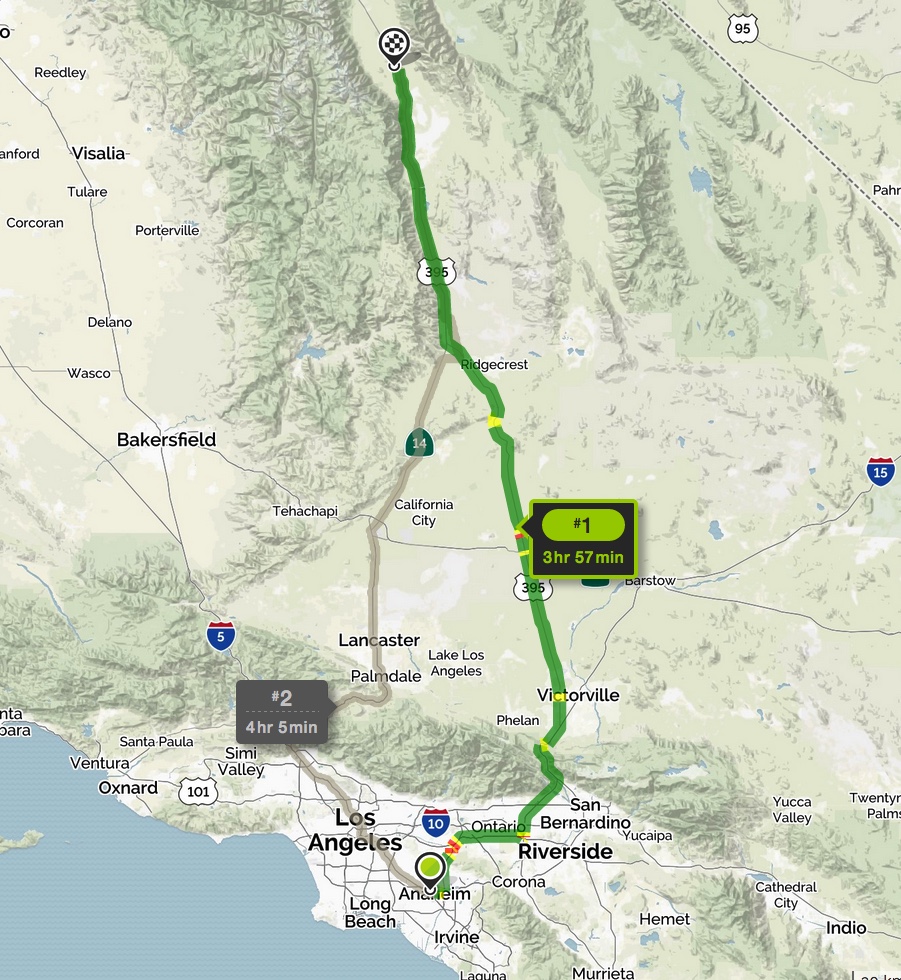
An easy four hour trip...
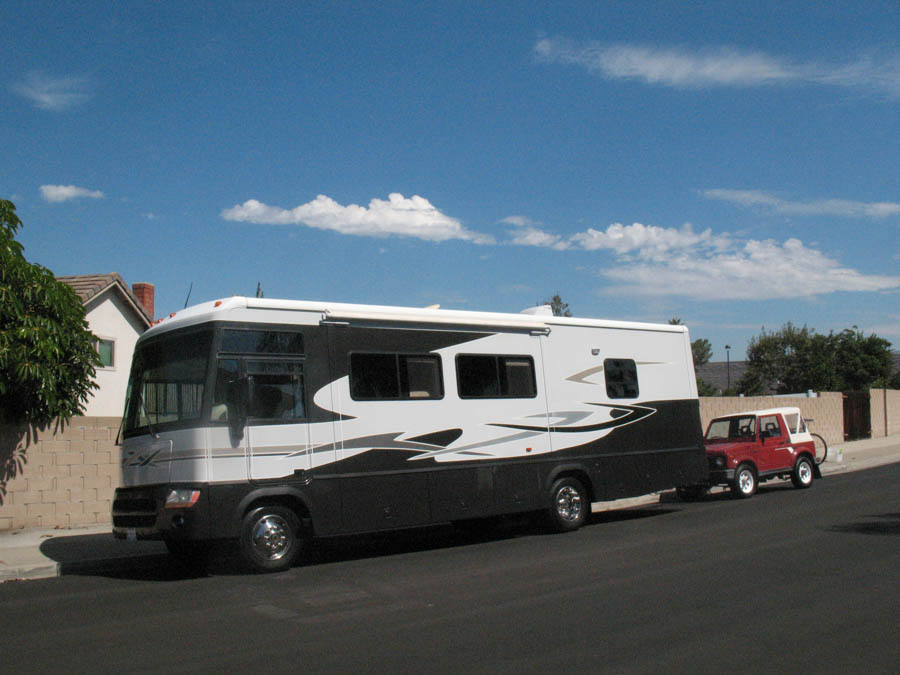
Gassed up and ready to go... So is the motorhome!

One more "walk around" to make sure all will be OK!
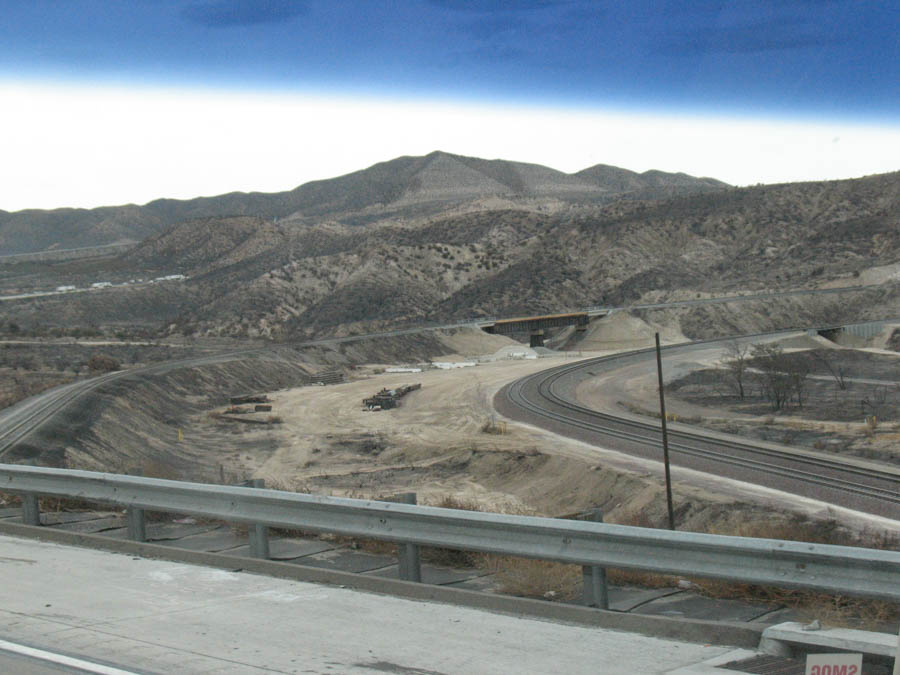
Up the grade through the pass on our way to Highway 395





Did You Know? - In the U.S. state of California, U.S. Route 395 (US 395) is a 557-mile (896 km) route which traverses from Interstate 15 near the southern city limits of Hesperia, north to the Oregon state line in Modoc County near Goose Lake. The route clips into Nevada, serving the cities of Carson City and Reno, before returning to California.
Prior to truncation, US 395 served the metropolitan areas of San Diego and San Bernardino. The highway serves as a connection to the Los Angeles area for the communities of the Owens Valley, Mammoth Lakes and Mono Lake. The highway is used as an access for both the highest point in the contiguous United States, Mount Whitney, and the lowest point in North America, Death Valley.
The corridor has been used since the California gold rush, and before numbering was known by several names including El Camino Sierra. This route is part of the California Freeway and Expressway System and is eligible for the Scenic Highway system.
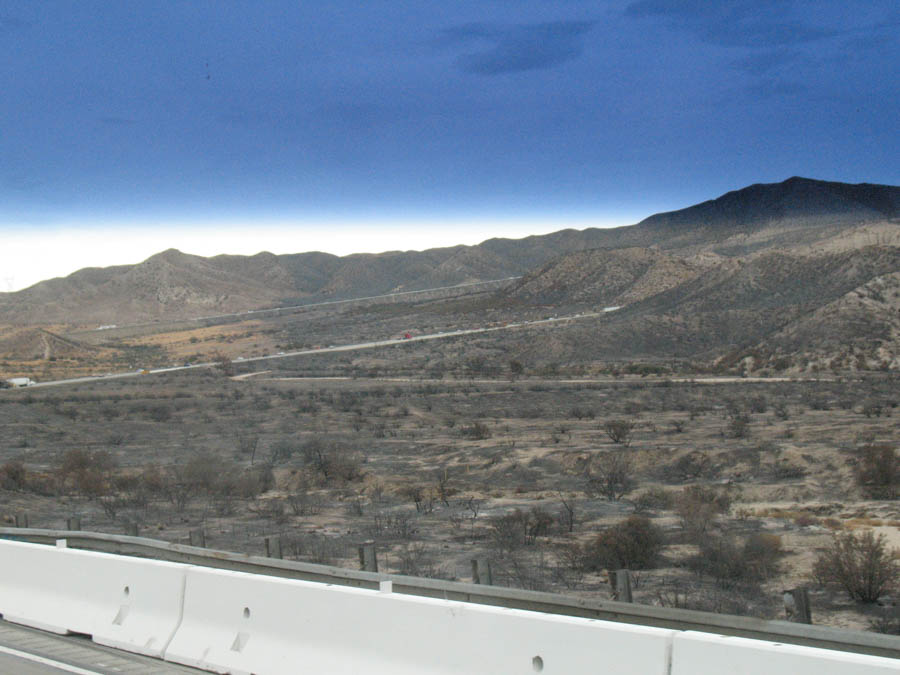
"We think we can... We think we can"

At the summit... So is the Summit Inn
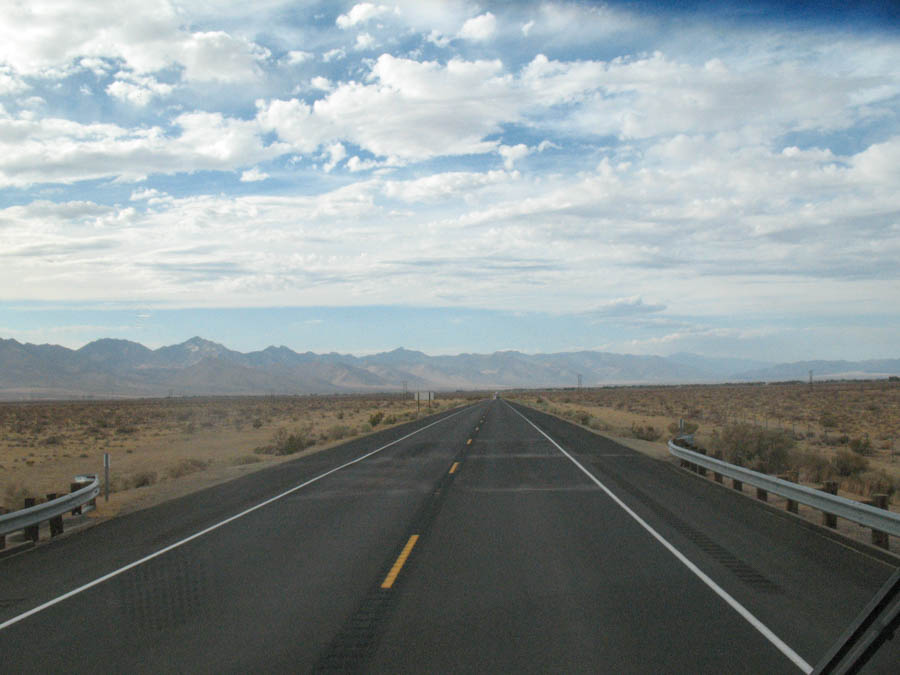
Miles and miles of miles and miles

Only a few more minutes and we can stop!
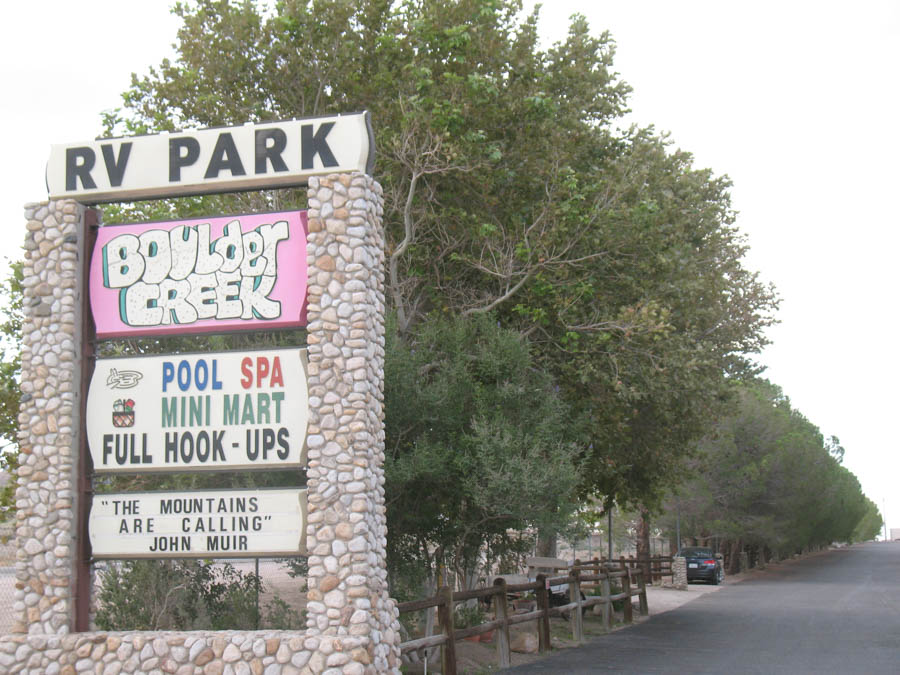
Did You Know? - Nestled at the base of the beautiful Eastern Sierra Nevada near Lone Pine, Boulder Creek is a resort-style RV park that offers full hook-up RV sites, tent camping, and rental cabins. They are open year round so the guests can experience the Owens Valley in all four beautiful seasons. We enjoyed free coffee and muffins in our clubhouse. You can fill up your propane and stock up on ice, and pick up some necessities or souvenirs in the well stocked mini mart and gift shop.
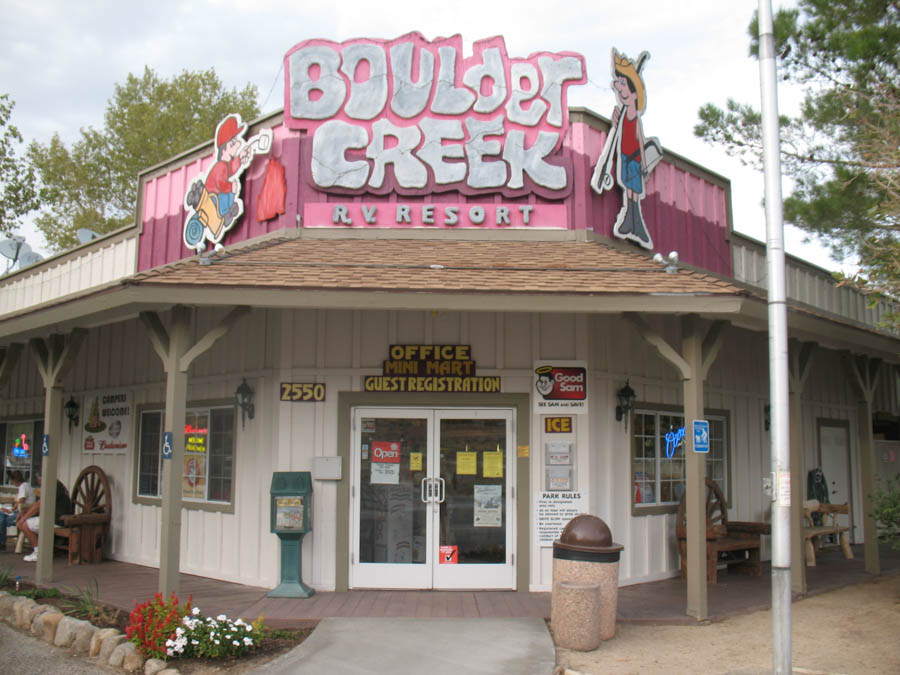
Come on in!
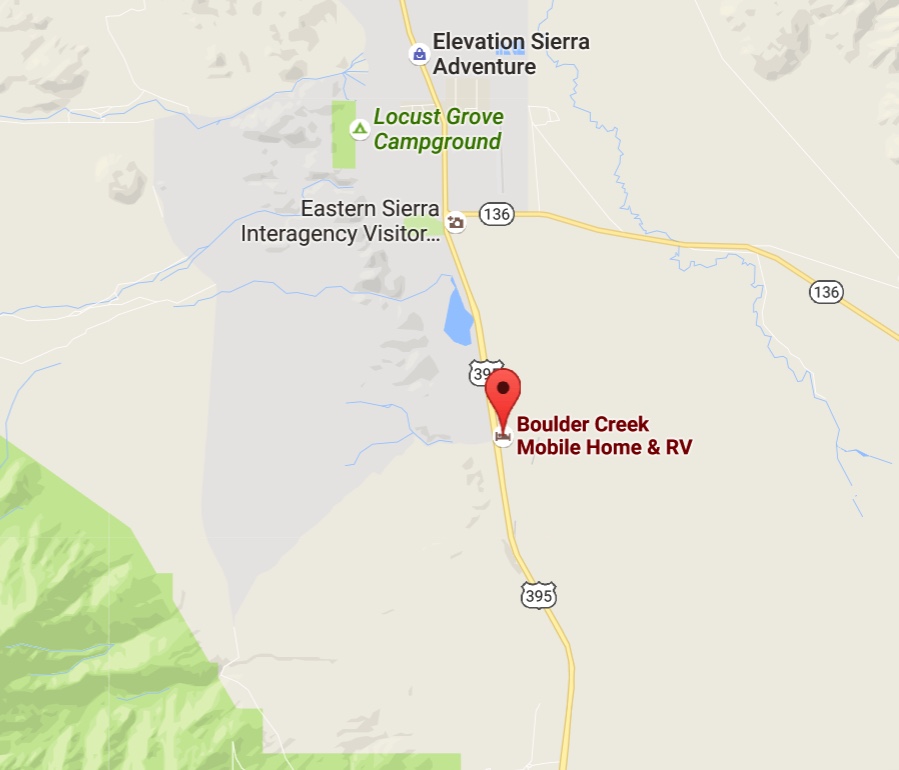
Four miles short of Lone Pine California
Did You Know? - Lone Pine is a census designated place (CDP) in Inyo County, California, United States. Lone Pine is located 16 miles (26 km) south-southeast of Independence, at an elevation of 3727 feet (1136 m).
The population was 2,035 at the 2010 census, up from 1,655 at the 2000 census. The town is located in the Owens Valley, near the Alabama Hills. From possible choices of urban, rural, and frontier, the Census Bureau identifies this area as "frontier".
The local hospital, Southern Inyo Hospital, offers standby emergency services. On March 26, 1872, the very large Lone Pine earthquake destroyed most of the town and killed 27 of its 250 to 300 residents.
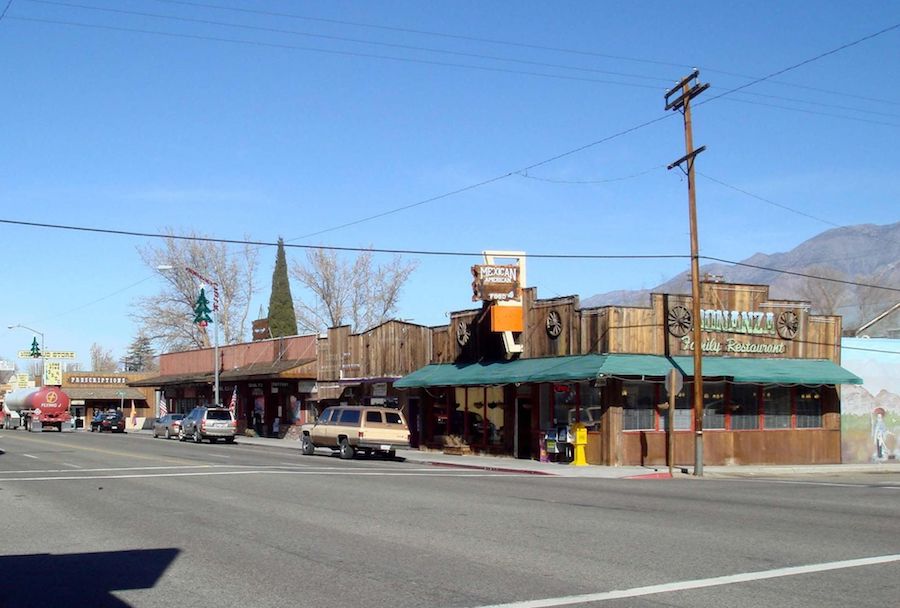
The wild west with automobiles

Day 1 9/19
Day 2 9/20
Day 3 9/21
Return To The Top
Summary Of The Day: All was well and we were moving right along until.... Ka-Boom! We were not moving forward anymore. Right out in the middle of nowhere along Hwy 395, the transmission decides to not work. After eleven hours on the highway we were pulled into Bishop by an eighteen wheeler. Thanks to the CHP who stayed with us for hours, we were all safe and sound but tired. We are definitely having an adventure!
Having the Suziki was wonderful as we used it to move around Bishop and make arrangements for the transmission repair. We first went to the Ford delearship but alas they recommended a Bishop "Trans-Mission" group.
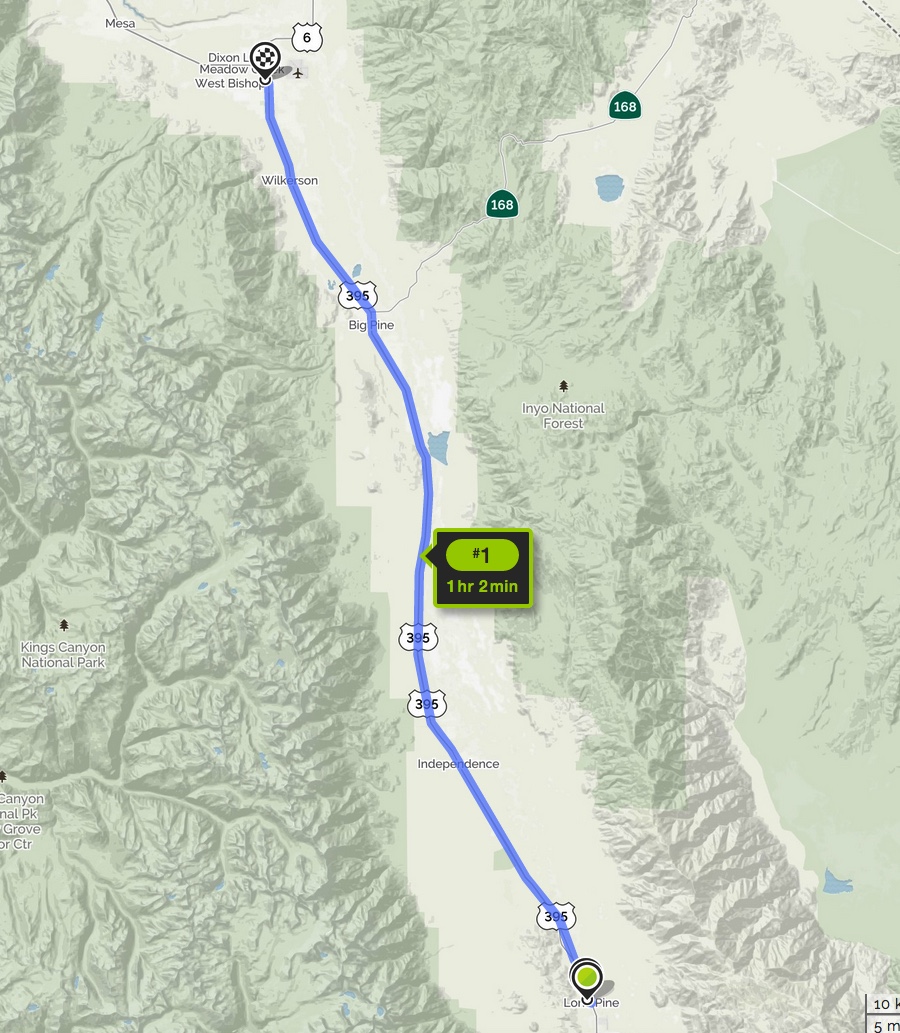
We are headed toward Bishop

Departing Lone Pine... The morning was terrific... Not a problem in the world!

The grade was not too bad but it was a long..... Bishop just a few miles ahead.

"Hey Bob.... Is the motorhome supposed to sound like that?
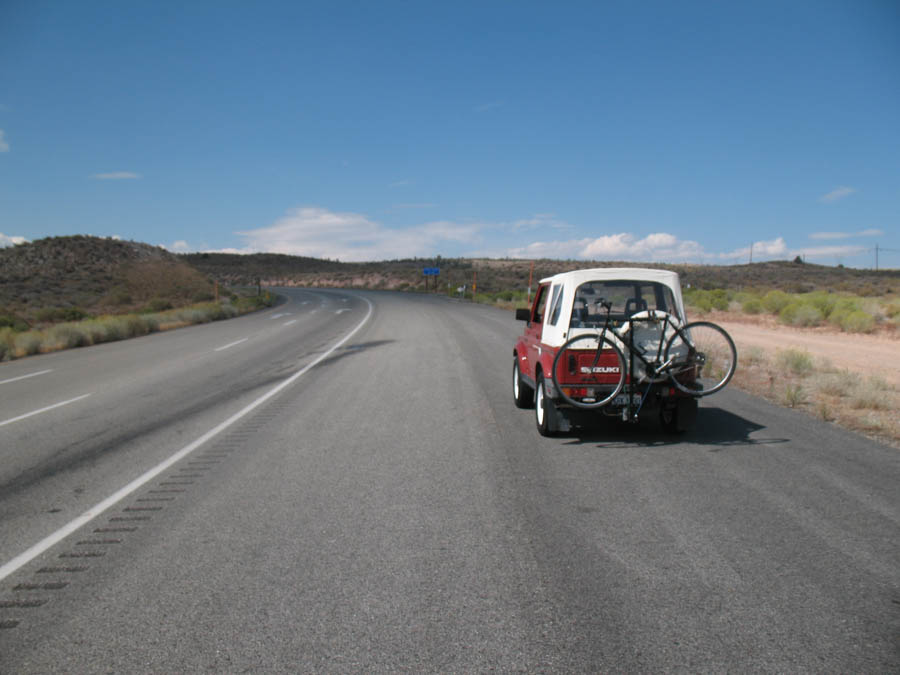
We pulled over and unhooked the car
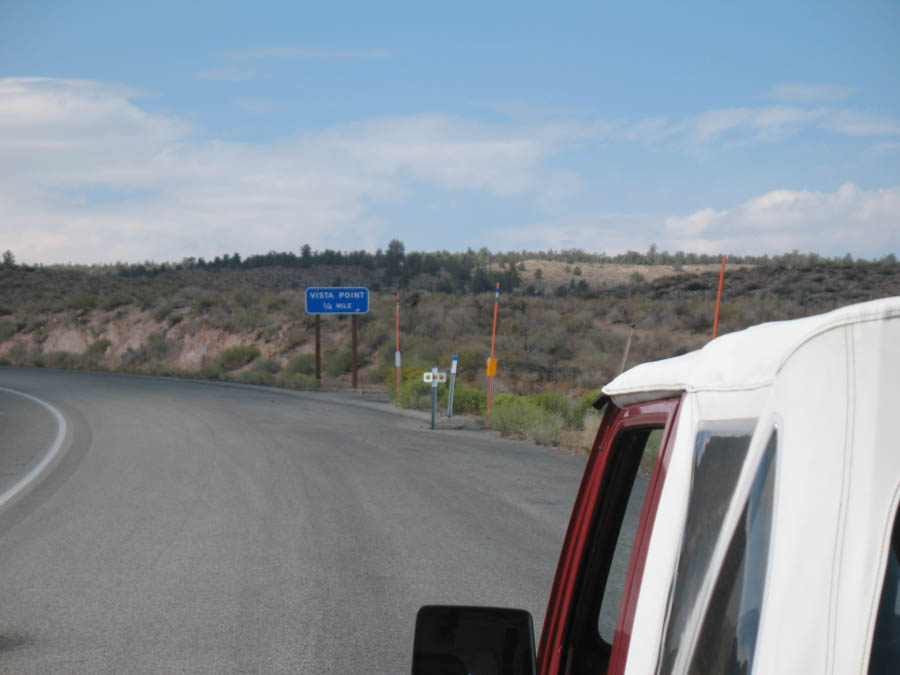
To the call box.... S...O...S...
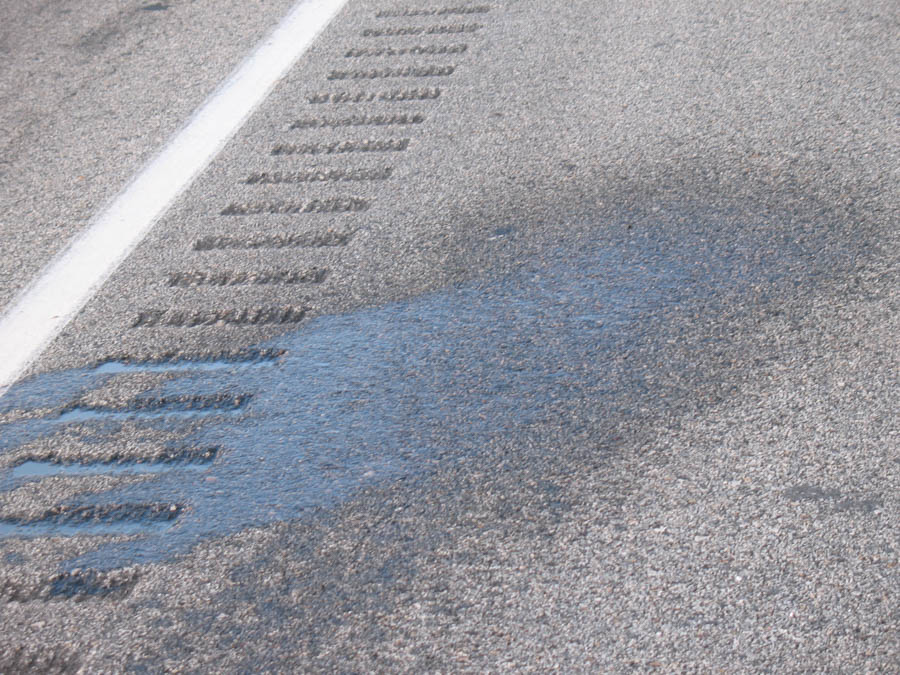
M-m-m-m-m-m-m Smells like transmission oil!

It was transmission oil!
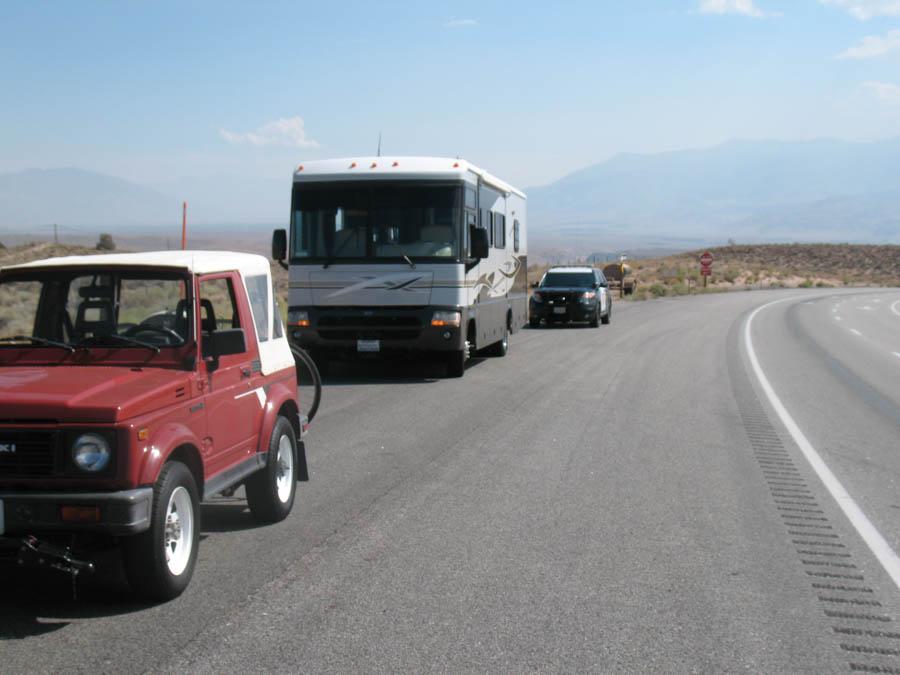
The CHP arrived on scene and stayed with us for a long time until we were safe

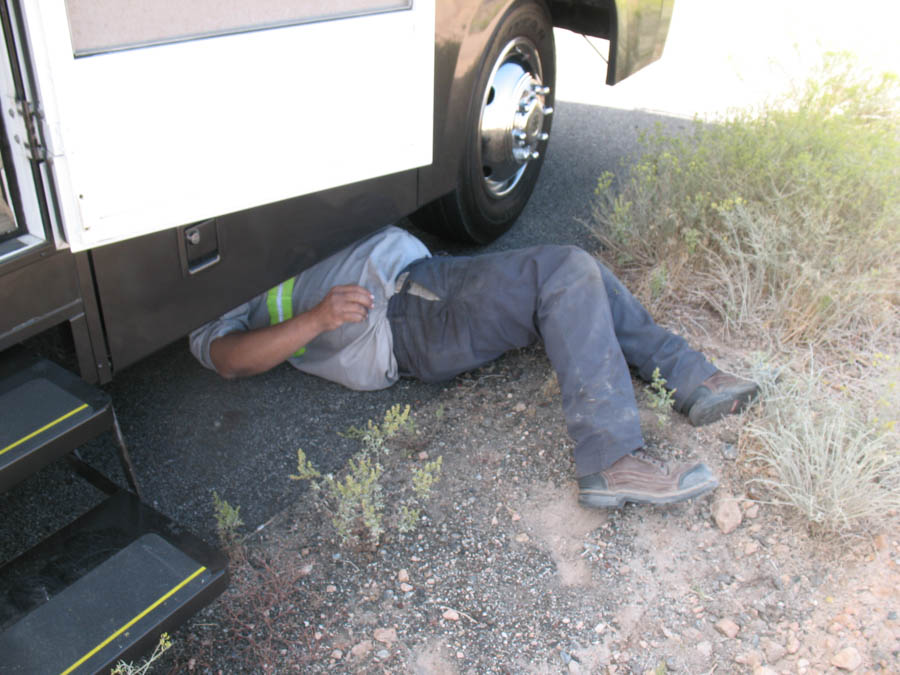
We have the transmission inspected... Yup!
We see a tow in our future

Sending for help!
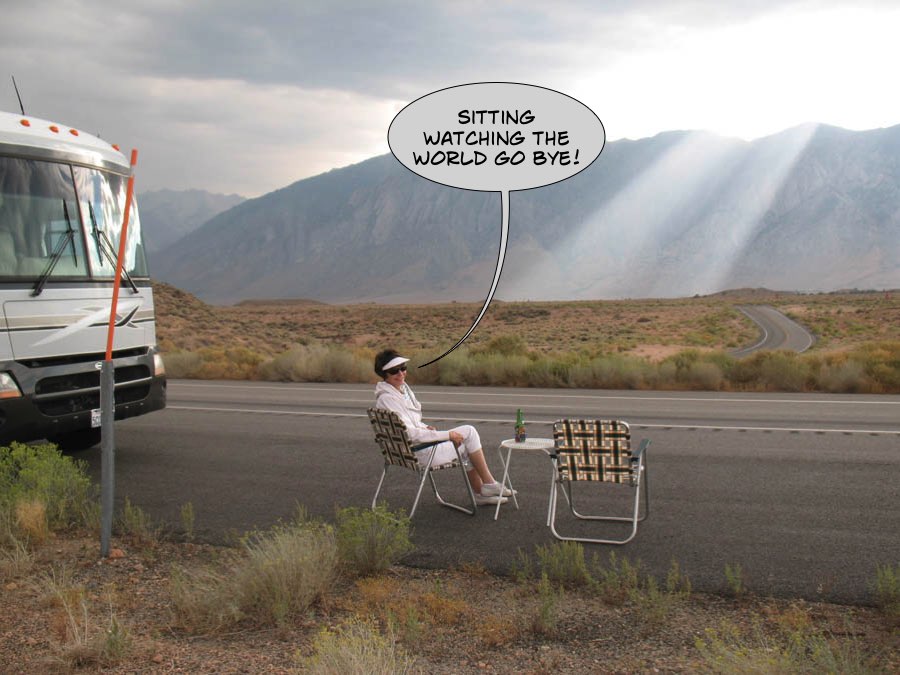
Front row seat to Highway 395
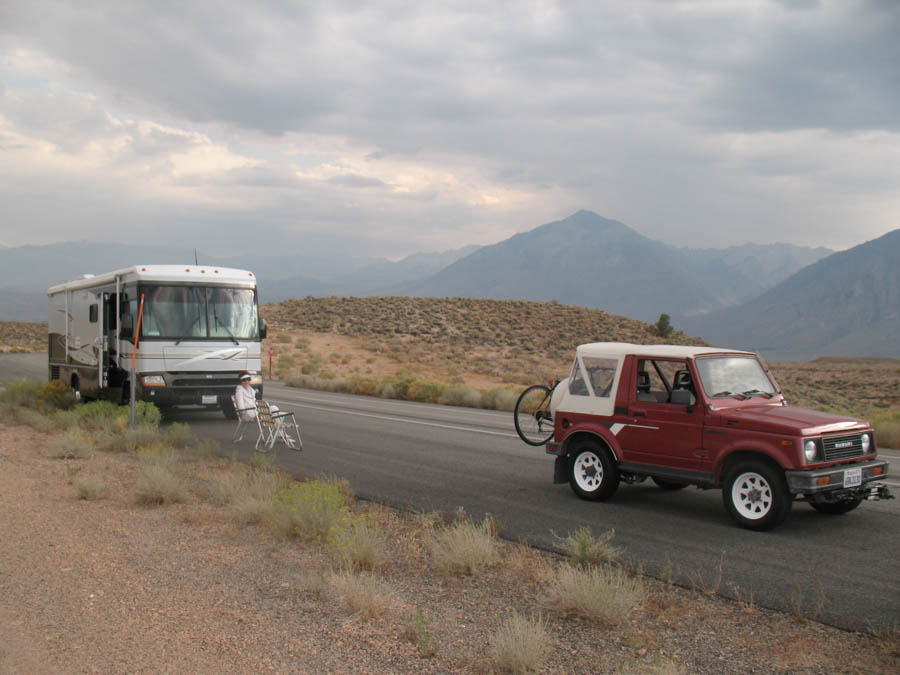
"When will they show up ?"

"Hey Bob... It is getting late!"

"Help... We are being swallowed by an eighteen wheeler!"

Upsee Daisey

"The motorhome is loaded! Now what?"
Let's go to town and we will get loaded!

Day 1 9/19
Day 2 9/20
Day 3 9/21
Return To The Top
Summary: The motorhome gets a full examination at Bishop Ford so we decided to got a local train museum to pass the time!
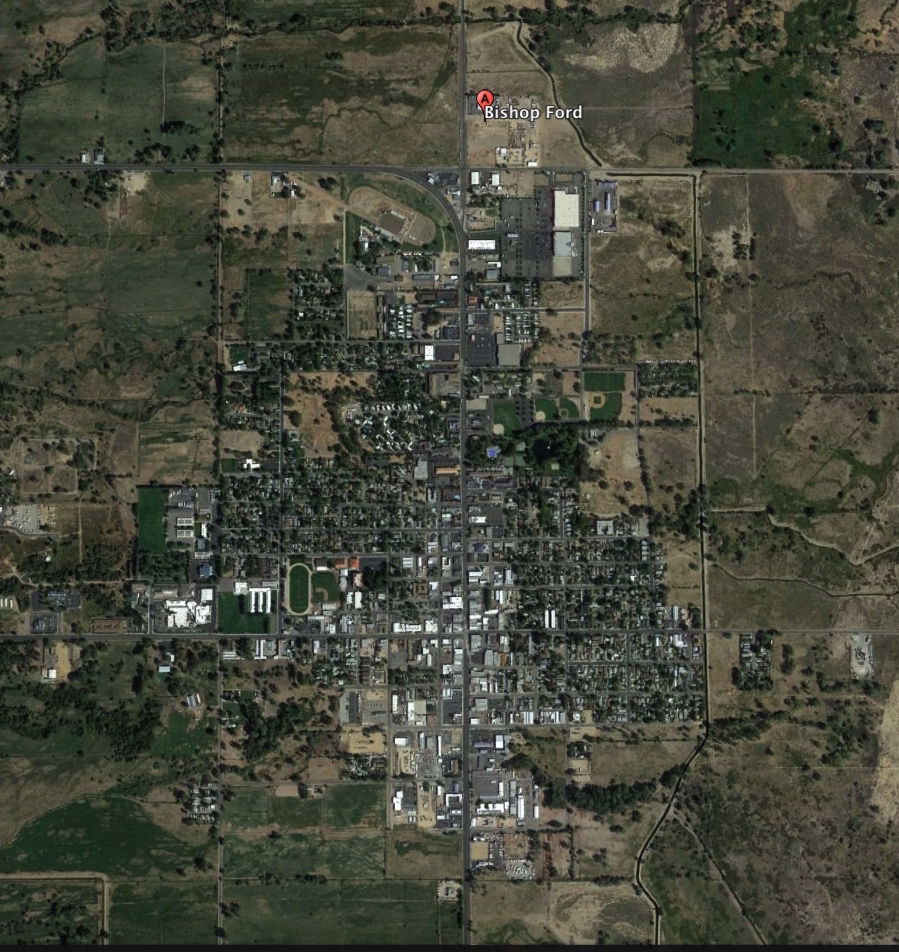
Bishop Ford is on the northern outskirts of town

We had our car so we could "get out of town"...
Actually one could walk out of town!

A scenic location to while away the hours!
Did You Know? - Bishop (formerly Bishop Creek) is a city in Inyo County, California, United States. Though Bishop is the only city and the largest populated place in Inyo County, the county seat is located in Independence. Bishop is located near the northern end of the Owens Valley,[4] at an elevation of 4,150 feet (1,260 m).
The population was 3,879 at the 2010 census, up from 3,575 at the 2000 census. The town was named after Bishop Creek, flowing out of the Sierra Nevada: the creek was named after Samuel Addison Bishop, a settler in the Owens Valley.
Bishop is known as the "Mule Capital of the World" and a week-long festival called Bishop Mule Days has been held since 1969 on the week of Memorial Day, celebrating the contributions of pack mules to the area. The festival attracts many tourists, primarily from the Southern California area.
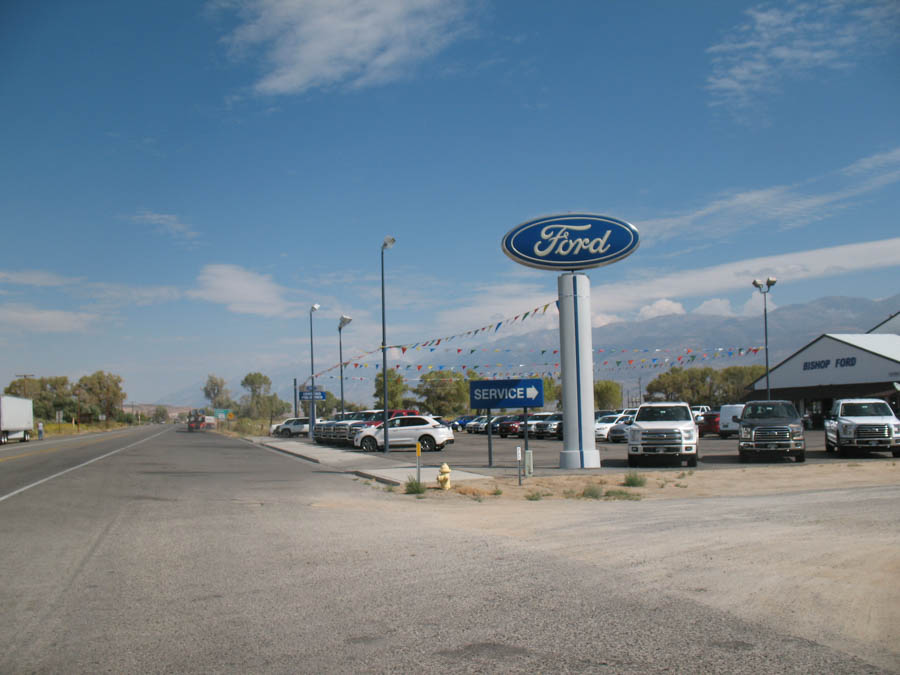
Civilization... A repair location!
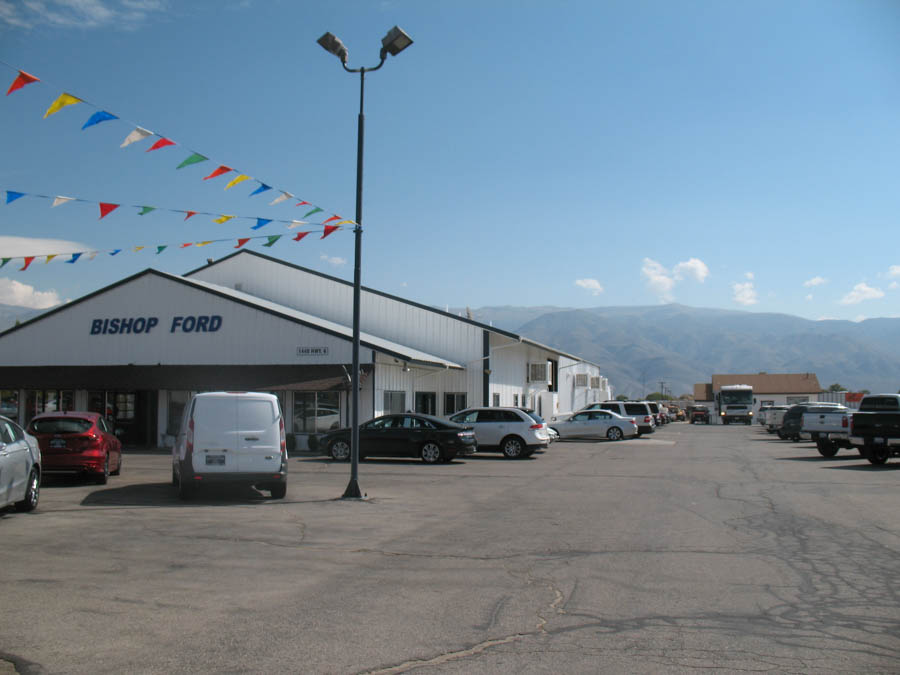
Home sweet home for the baby for several days!
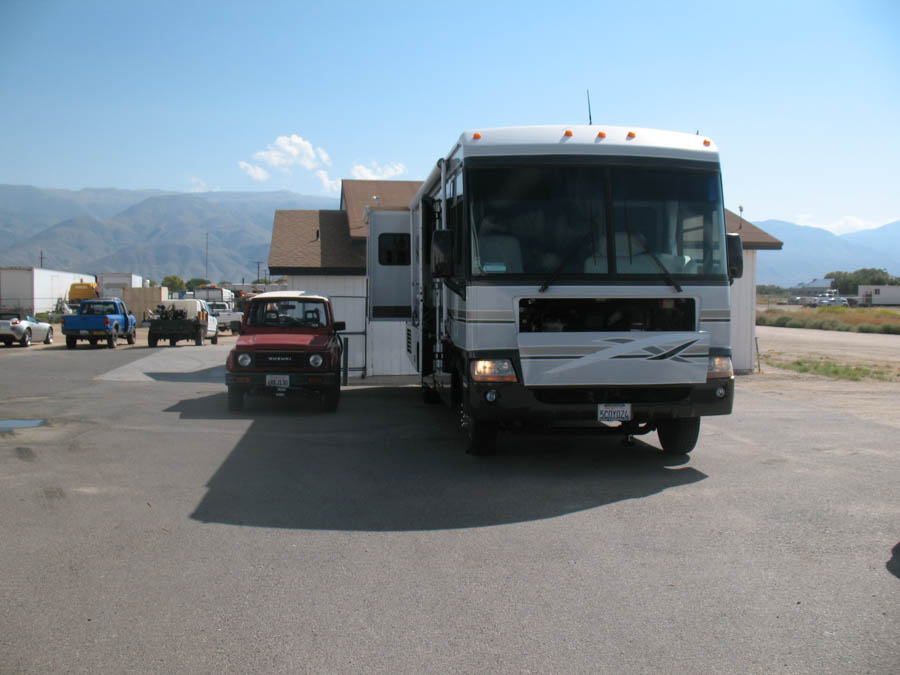
All is not lost, the lights work!

OMG... The Wicked Witch is dead!

No it is NOT Bob.... He left his sequined red shoes at home!

Sandy finds something to do!
Did You Know? - Patience, or solitaire as it is known in the US and Canada, is a genre of card games that can be played by a single player. Patience games can also be played in a head-to-head fashion with the winner selected by a scoring scheme.
In the US, the term solitaire is often used specifically to refer to solitaire with cards, while in other countries solitaire specifically refers to peg solitaire. Both Solitaire and Patience are sometimes used to refer specifically to the Klondike form of Patience.
The game is most likely German or Scandinavian in origin. The game became popular in France in the early 19th Century reaching England and America in the latter half. The earliest known recording of a game of patience occurred in 1783 in the German game anthology Das neue Königliche L'Hombre-Spiel.

What shall we do to pass the time?
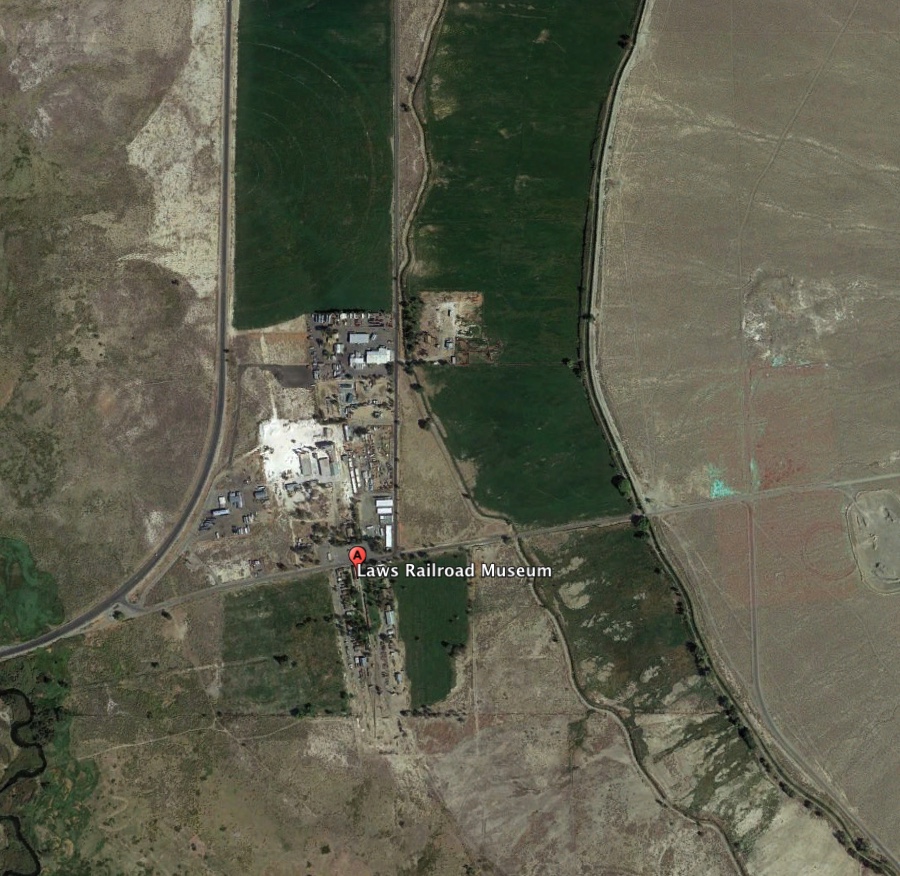
Laws is pretty small... Population seven (inlcuding the dogs and cats)
Did You Know? - Laws (formerly, Station and Bishop Depot) is an unincorporated community in Inyo County, California.
Laws is located 4 miles (6.4 km) northeast of Bishop on U.S. Route 6, towards the Nevada state line.
The settlement of Station was formed in 1883 as a depot on the Carson and Colorado Railroad. The name was changed to Laws in honor of R.J. Laws, a railroad official. A post office operated at Laws from 1887 to 1963
The town of Laws was a railroad station along a 3 ft (914 mm) narrow gauge railway portion of the Southern Pacific Railroad.
Today the town of Laws exists as a museum of Owens Valley and Eastern Sierra Nevada history. It is registered as California Historical Landmark #953.
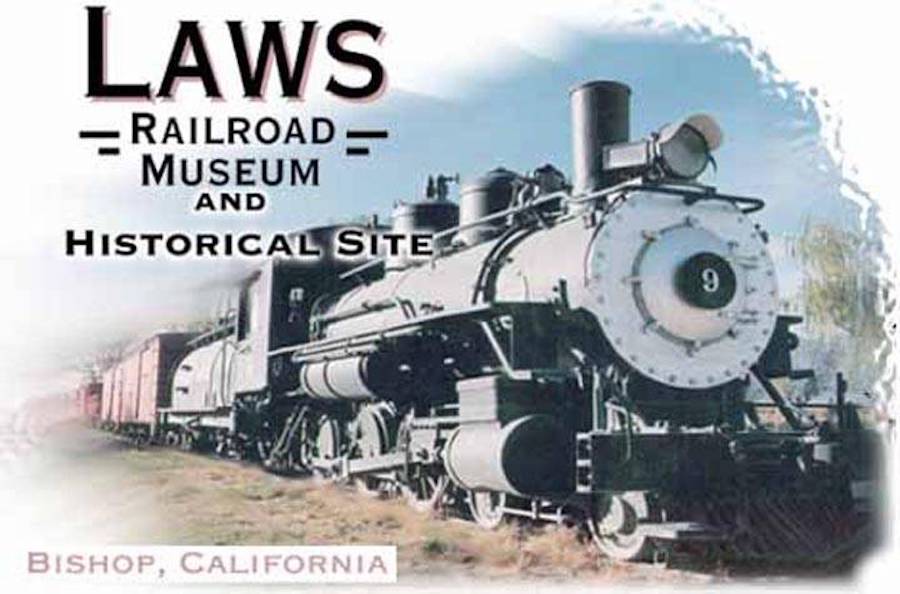
Located just off U.S. 6, 5 miles from U.S. 395 in Inyo County, CA, you will find the Laws Railroad Museum. This museum transfers you back to a time when the railroad station was at the center of the action in many western towns.
Did You Know About The History Of Laws? - On May 10, 1880, the Carson and Colorado Railroad Company was formed and incorporated by William Sharon, H. M. Yerington and Darius Mills.
They planned to run the narrow gauge railroad from Mound House, Nevada, and the Carson River to the Colorado River, calling it the C&C Railroad. It never reached the Colorado River but stopped at Keeler, California. It has often been referred to as "the railroad that was built 300 miles too long or 300 years too soon"
As the word was out that the railroad would run east of the Owens River, people started to arrive at what is known now as Laws. A new railroad town was built.
It took 3 years for the rails to be laid from Mound House to Laws, with the first train arriving in April of 1883. The depot, agent's house, section boss's house, outhouses, water tank and turntable were all ready when it arrived.
In addition to the railroad buildings other construction quickly followed which included many homes, barns, and corrals, two general stores, a rooming house, eating house, hotel, boarding house, pool hall and dance hall, blacksmith shop, post office, barber shop, powder magazine and warehouses. Several industrial buildings followed later. Many ranches surrounded Laws and used the railroad to ship their crops.
The decline and demise of Laws and the railroad were the result of the local mines closing, trucking becoming cheaper than rail freight and the city of Los Angeles buying most of the valley for the water rights.
By 1959 when the railroad ceased operation, there was no trace of any of the buildings at Laws as they had all been torn down for salvage. Only the depot, agent's house, oil and water tanks and the turntable survived. All the other buildings you see at the museum today were doomed for destruction locally but were saved by being moved to the museum grounds.
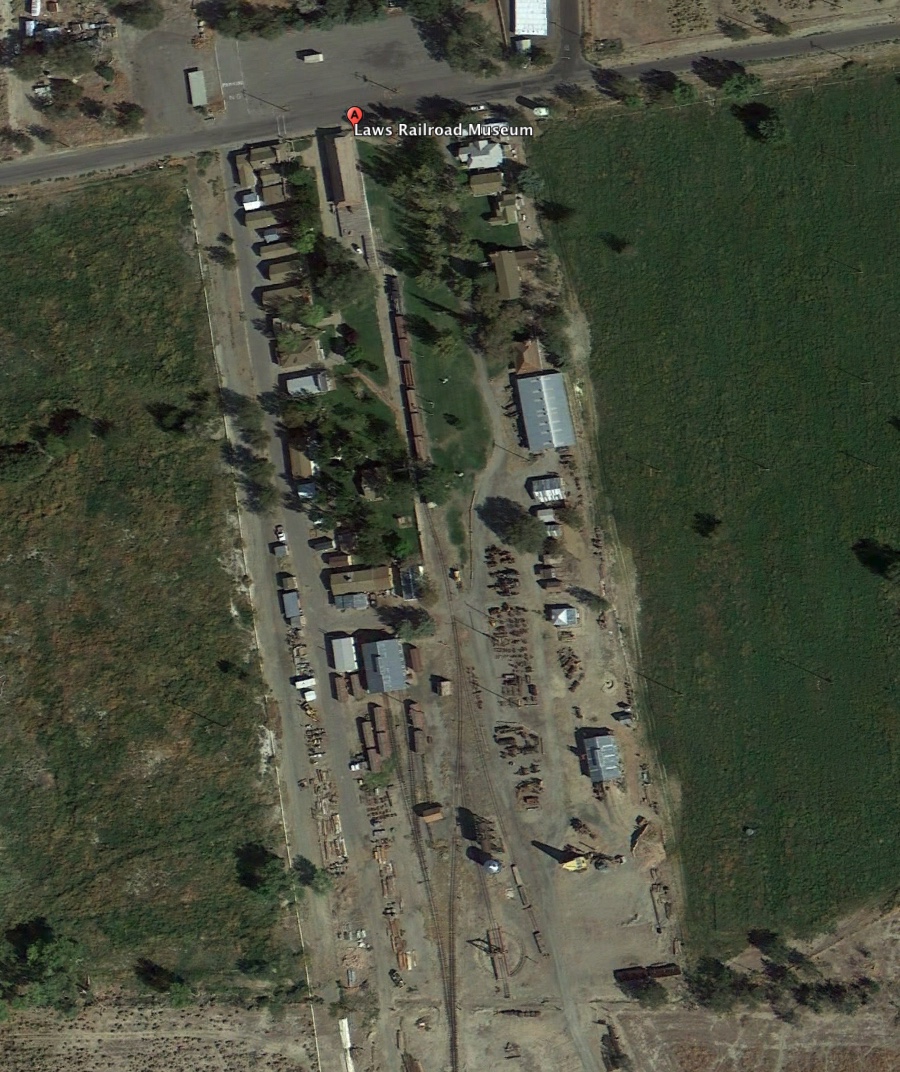
Get your walking shoes on!
Did You Know? - The Laws Railroad Museum and Historic Site includes static displays of a train consisting of an oil-fired steam engine Steam locomotive, Southern Pacific #9 and several freight cars from the Southern Pacific Railroad's 3 ft (914 mm) narrow gauge lines.
There are also operating locomotives (none of which are steam-powered) that run on the narrow gauge track on the museum's grounds. The museum's display explains that the railroad was relied on by many Eastern Sierra communities before modern roads were built during the 1950s and 1960s.
A station agent's home is located south of the railroad station. Docents portray the station agent on most days, helping visitors understand the period culture.
The Museum includes several historic buildings moved to the museum site from downtown Bishop. There is a church and school house. There is a wooden Western Electric 11-type telephone booth. A vehicle on display was a 1949 ambulance, which was later painted black, stripped of emergency lighting, and used as a hearse. Medical implements from a historic local doctor's office are on display.
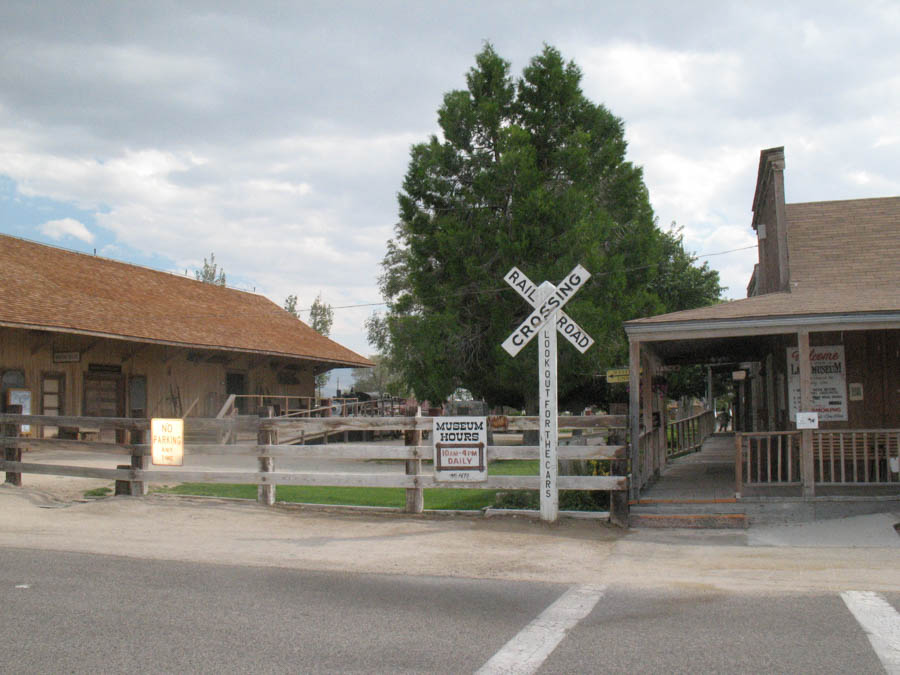
We are here to
see history restored
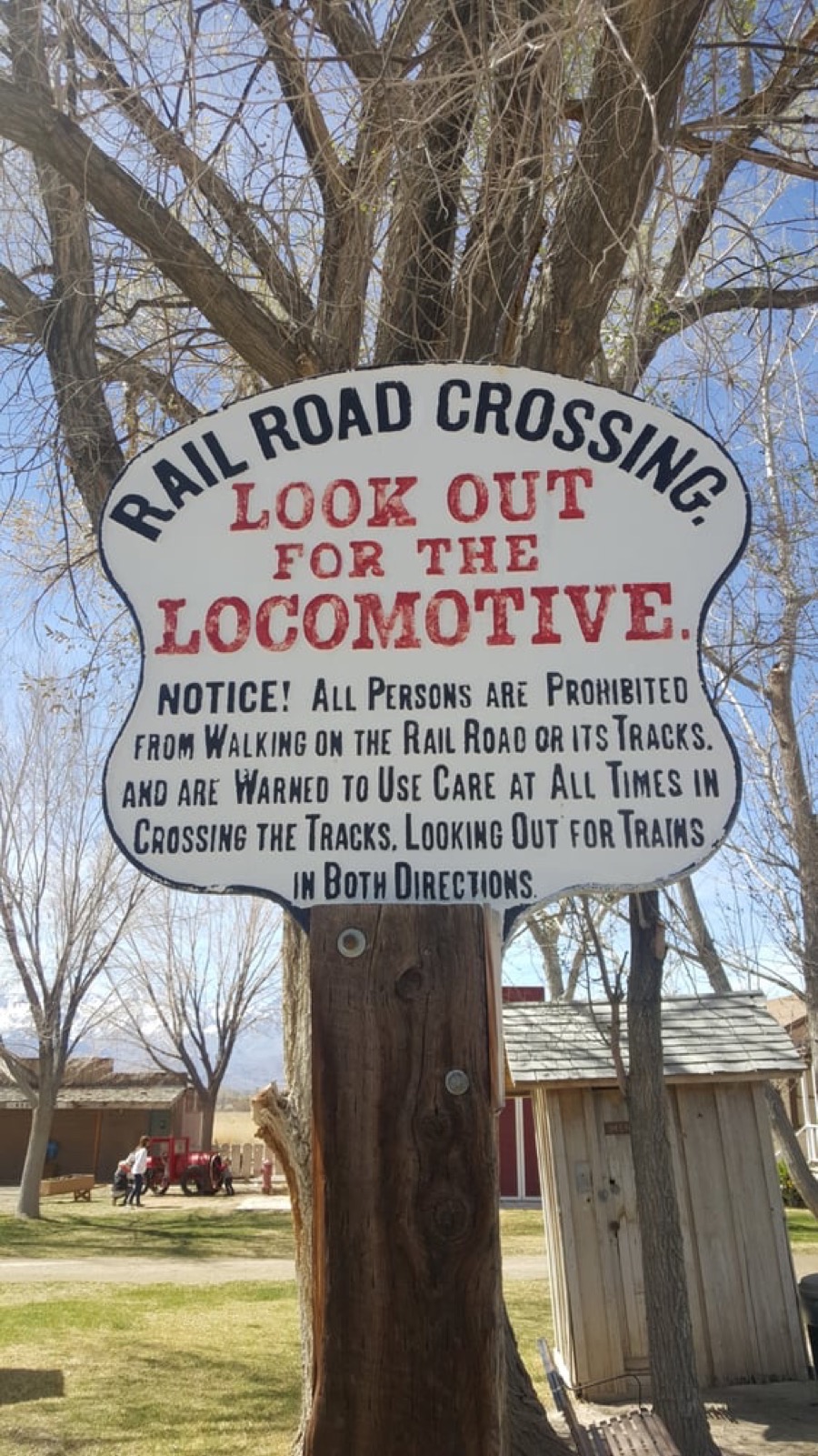
We watched out!
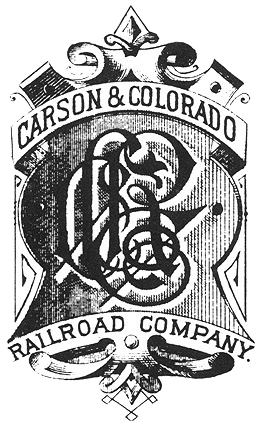


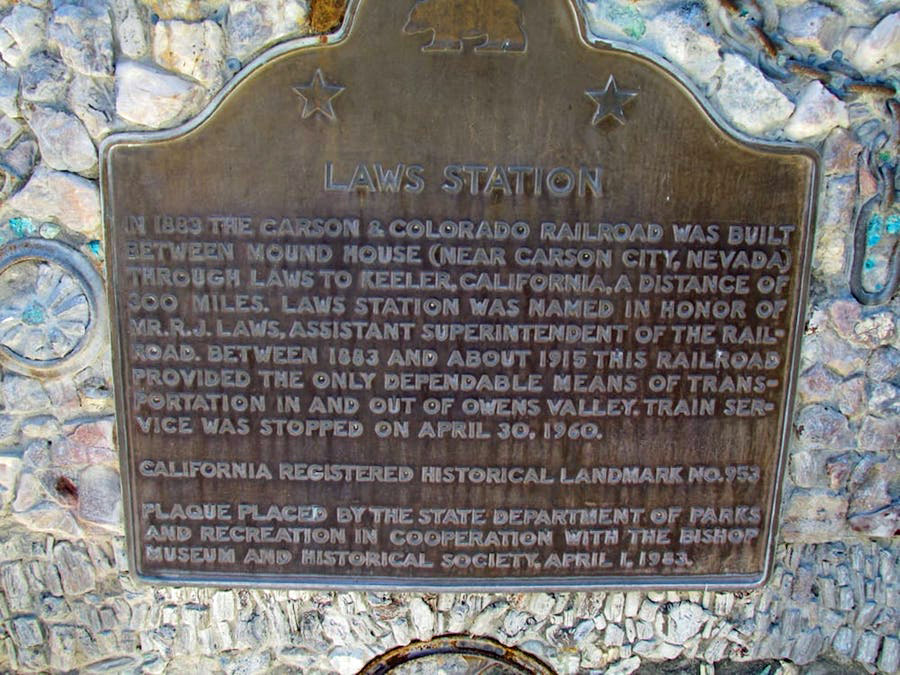
The Laws Station was between Mound House Nevada and Keeler California
The Plaque Reads: "In 1883 the Carson & Colorado Railroad was built between Mound House (near Carson City, Nevada) through Laws to Keeler, California, a distance of 300 miles. Laws Station was named in honor of Mr. R. J. Laws, Assistant Superintendent of the railroad. Between 1883 and about 1915, this railroad provided the only dependable means of transportation in and out of Owens Valley. Train service was stopped on April 30, 1960."
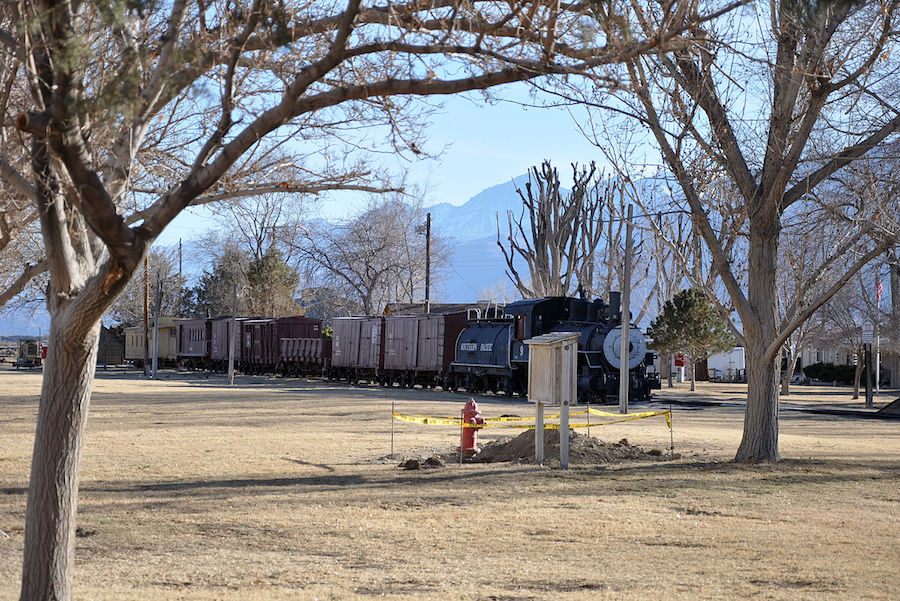
The narrow gauge railroad has a train!
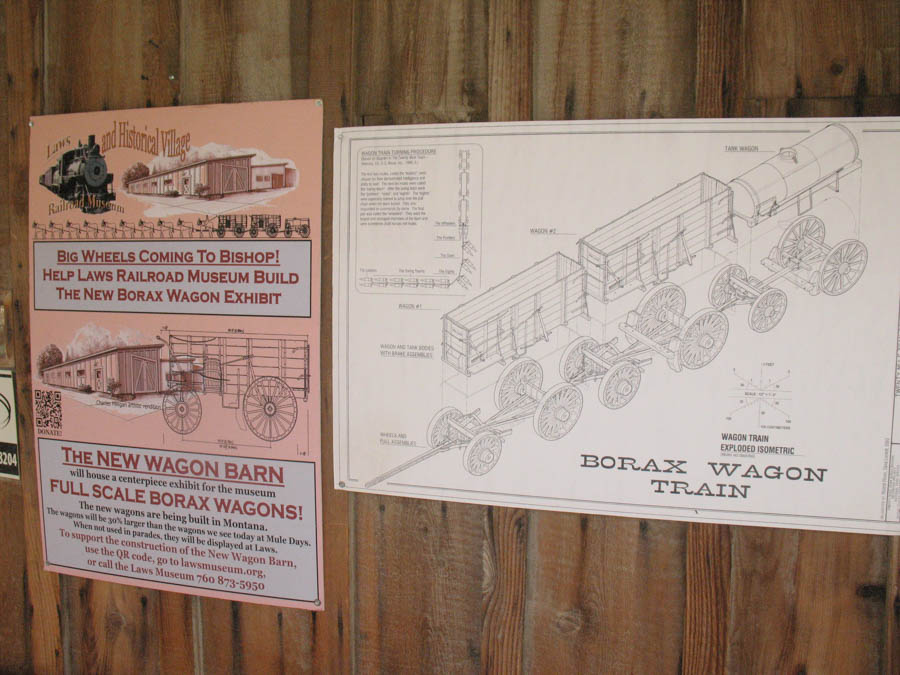
The Borax Wagon Train was full sized!
Did You Know? - Borax, also known as sodium borate, sodium tetraborate, or disodium tetraborate, is an important boron compound, a mineral, and a salt of boric acid. Powdered borax is white, consisting of soft colorless crystals that dissolve easily in water.
Borax has a wide variety of uses. It is a component of many detergents, cosmetics, and enamel glazes. It is also used to make buffer solutions in biochemistry, as a fire retardant, as an anti-fungal compound, in the manufacture of fiberglass, as a flux in metallurgy, neutron-capture shields for radioactive sources, a texturing agent in cooking, as a precursor for other boron compounds, and along with its inverse, boric acid, is useful as an insecticide.
In artisanal gold mining, the borax method is sometimes used as a substitute for toxic mercury in the gold extraction process. Borax was reportedly used by gold miners in parts of the Philippines in the 1900s.[5]
The term borax is used for a number of closely related minerals or chemical compounds that differ in their crystal water content, but usually refers to the decahydrate. Commercially sold borax is partially dehydrated.
Borax was first discovered in dry lake beds in Tibet and was imported via the Silk Road to the Arabian Peninsula in the 8th Century AD.[6] Borax first came into common use in the late 19th century when Francis Marion Smith's Pacific Coast Borax Company began to market and popularize a large variety of applications under the 20 Mule Team Borax trademark, named for the method by which borax was originally hauled out of the California and Nevada deserts in large enough quantities to make it cheap and commonly available.
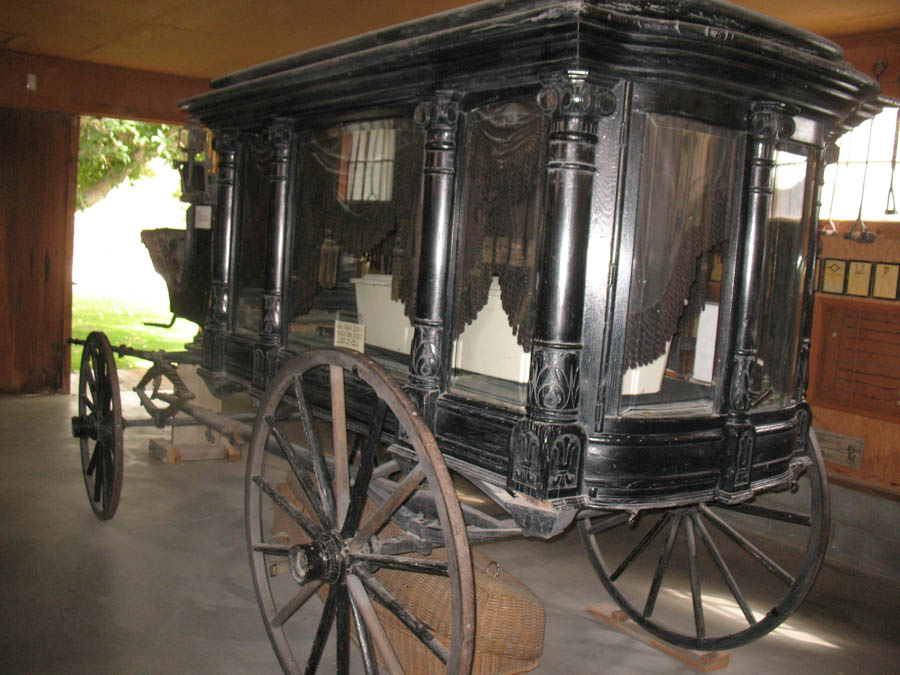
If you were rich in the olden days this would be your last ride
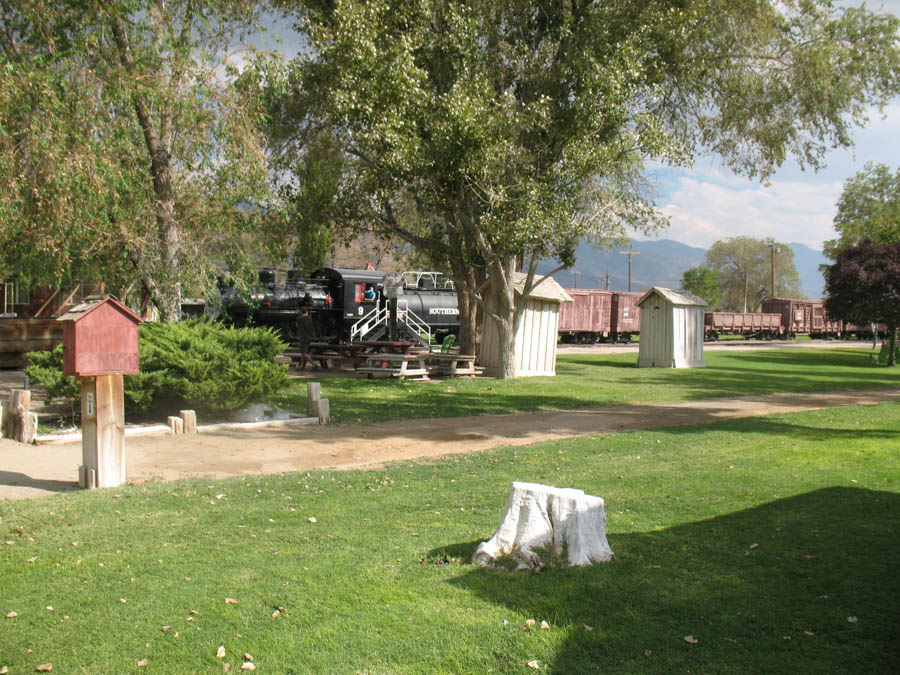
Looks like it just pulled into the station

That's one ringy-dingy... Two ringy dingy's

Now this would be a challenge to ride!!
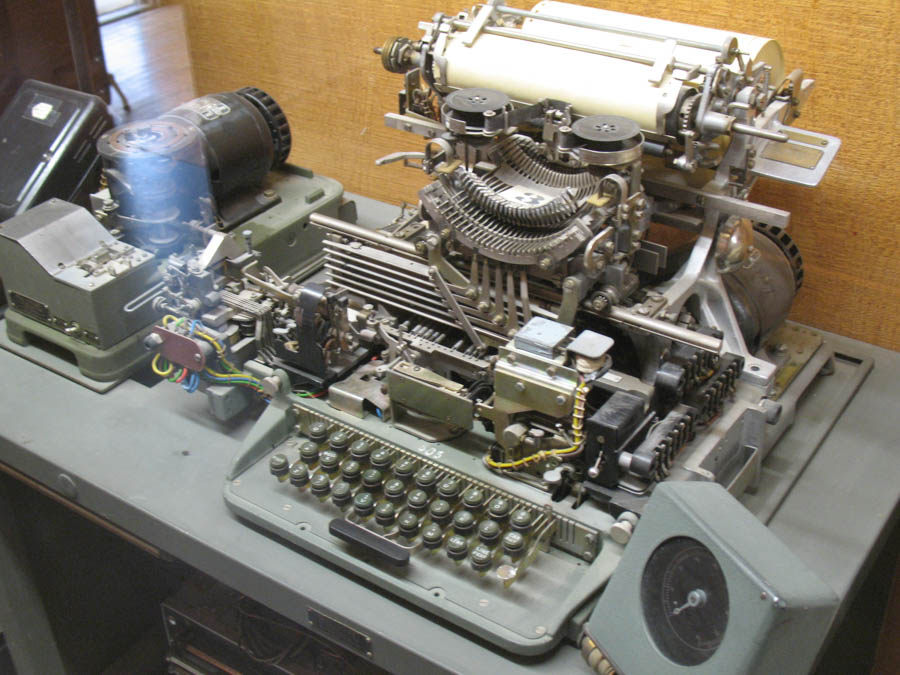
The inside of a Model 28 Teletype Machine...
Did You Know? - The Teletype Model 28 is a product line of page printers, typing and non-typing tape perforator and tape reperforators, fixed head single contact and pivoted head multi-contact transmitter-distributors, and receiving selector equipment. Regarded as the most rugged machines Teletype Corporation built, this line of teleprinters used an exchangeable type box for printing and sequential selector "Stunt Box" to mechanically initiate non-printing functions within the typing unit of the page printer, electrically control functions within the page printer and electrically control external equipment.
The Teletype Model 28 is more rugged and more expensive than later Teletype Model 32 machines. The Teletype Corporation introduced the Model 28 as a commercial product in 1953 after being originally designed for the United States military.
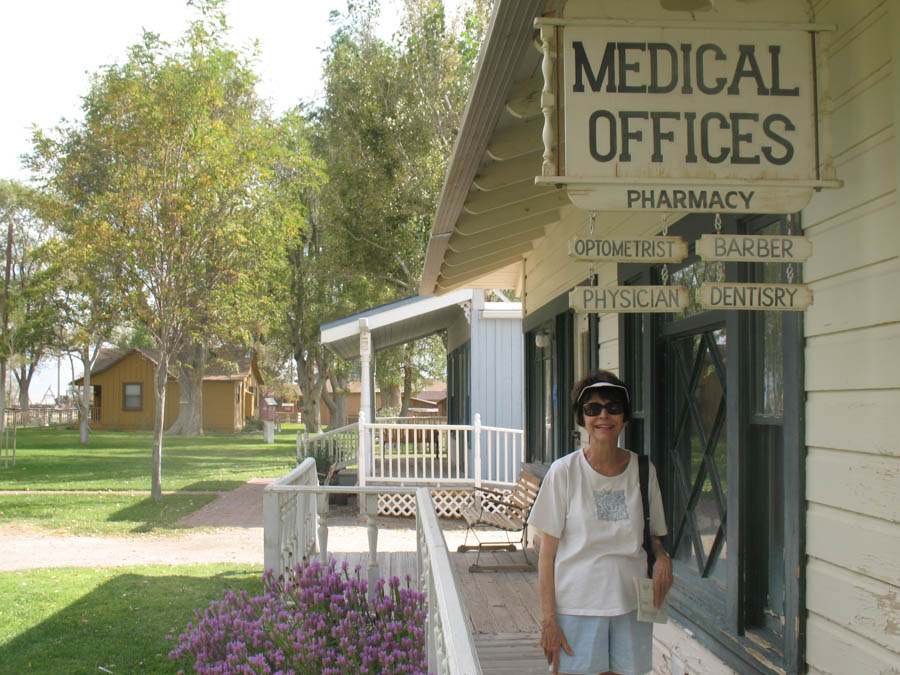
Sandy goes in to have a tooth examined!
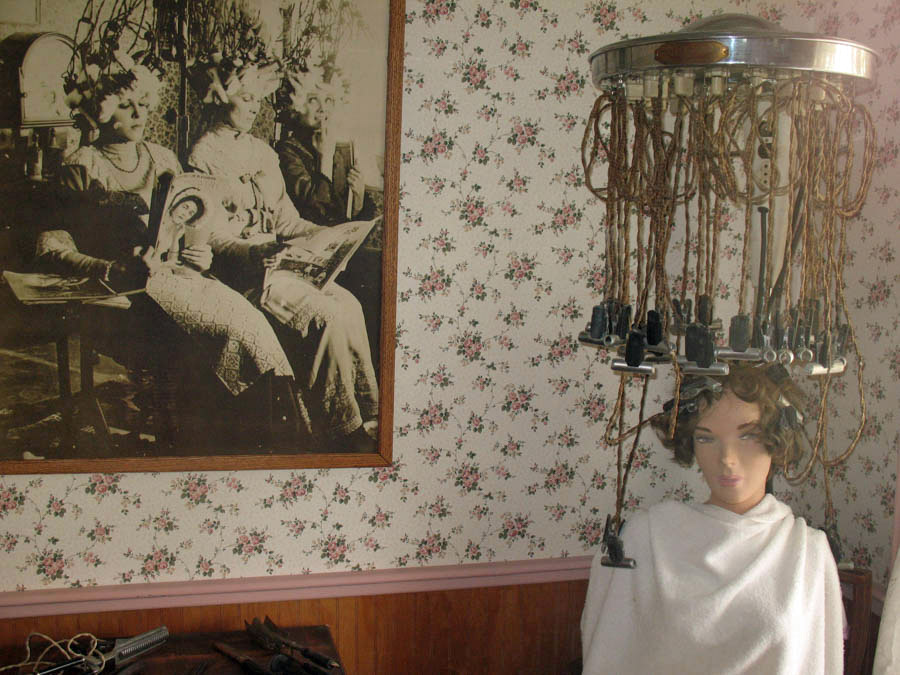
...and perhaps get a "new do"
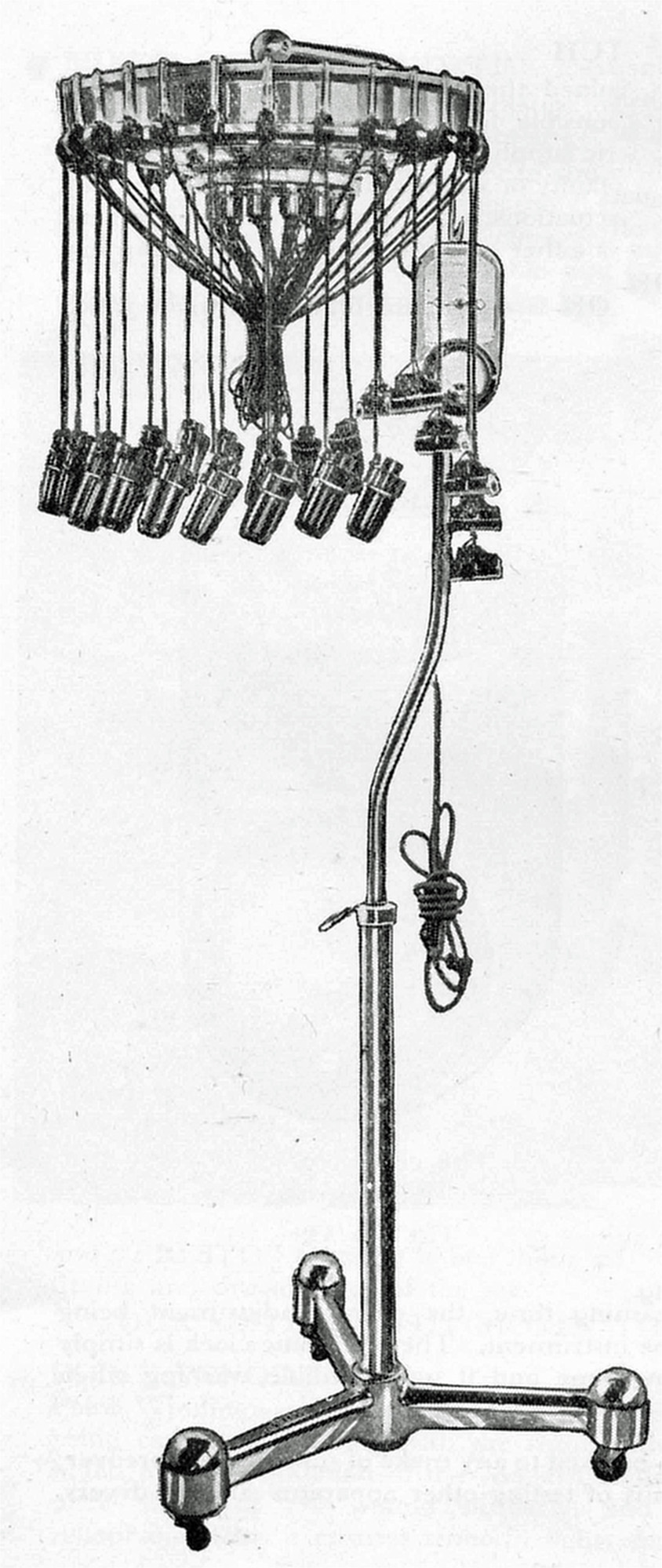
Did You Know? - Marcelling is a hair styling technique in which hot curling tongs are used to induce a curl into the hair. Its appearance was similar to that of a finger wave, but made by a quite different means.
State-of-the-Art Machine made by Icall in 1934, fitted with Bakelite heaters and a timer which compensated for the type of hair and other factors. Even the wheels were designed to avoid pick-up of hair from the salon floor. The design incorporated 15 tubular heaters and 6 croquignole.

Sandy asked "What are these?"
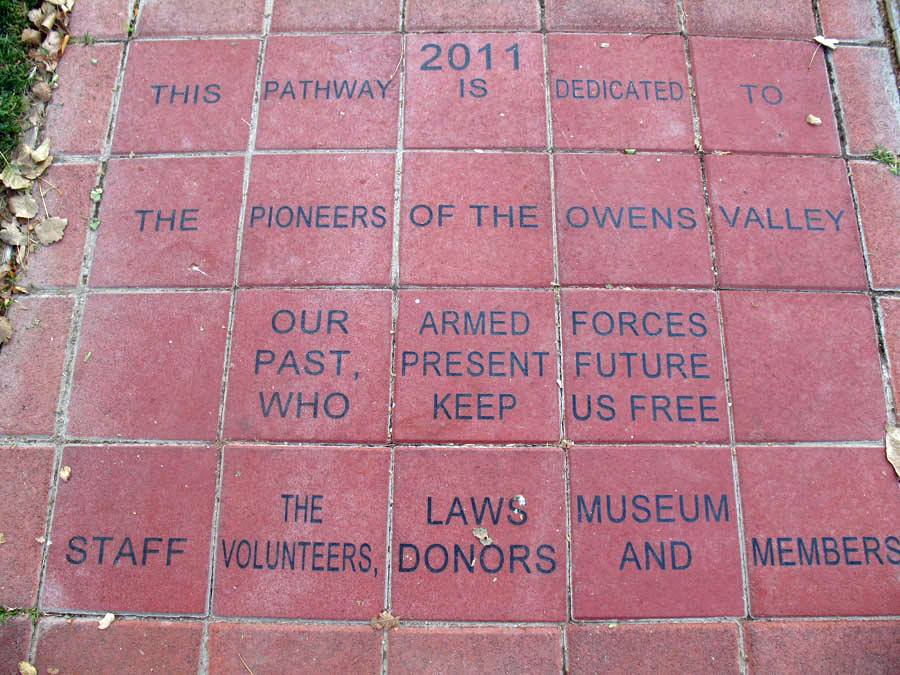
Nice entrance into the depot proper

What is a herd of cabooses called?
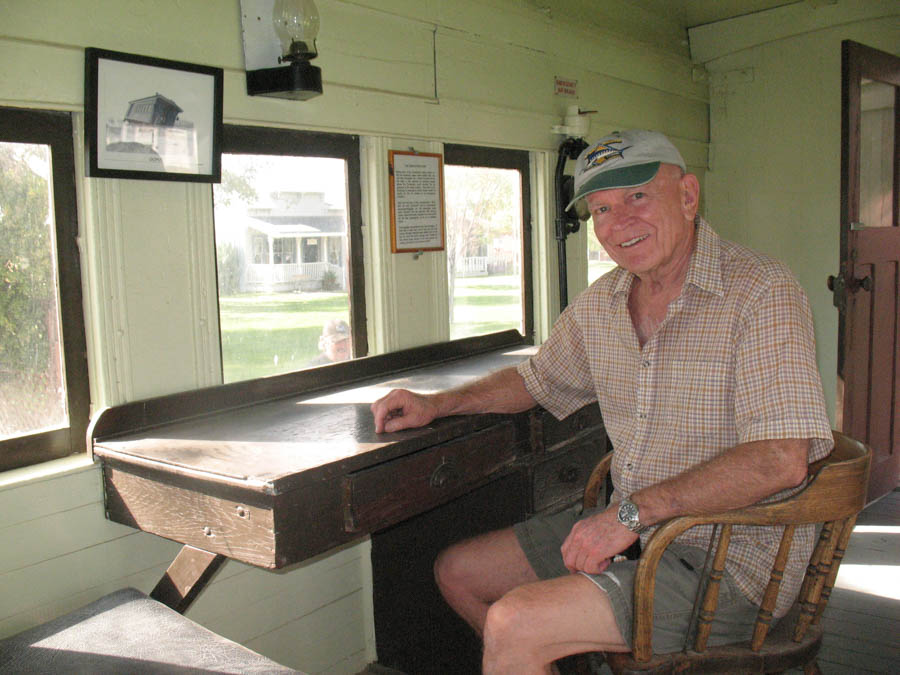
Bob is ready to go but where is the telegraph key?
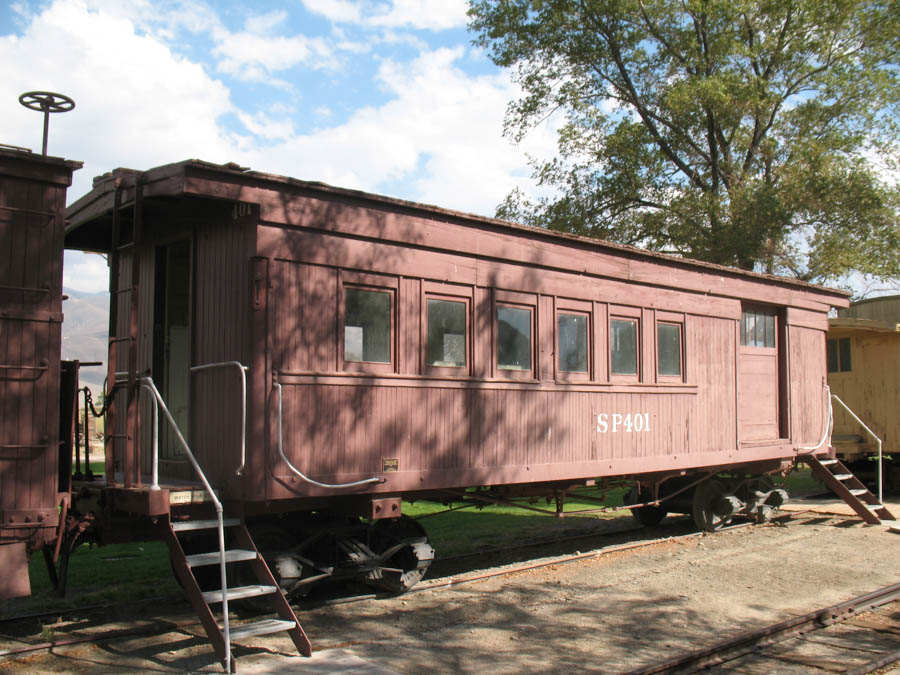
A combination passenger and baggage car
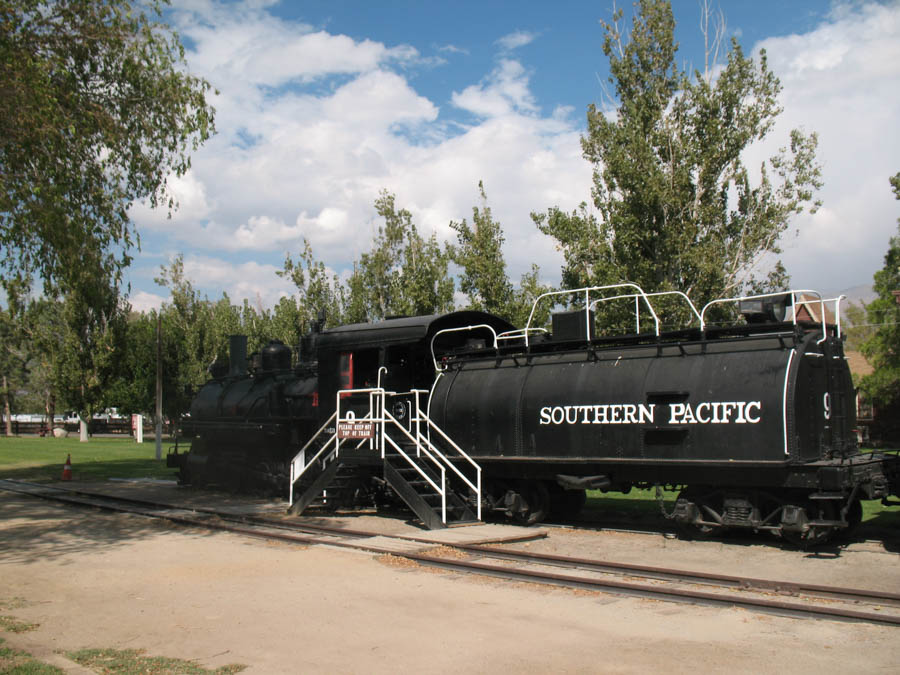
Engine #9
... Come on in and ring the bell!
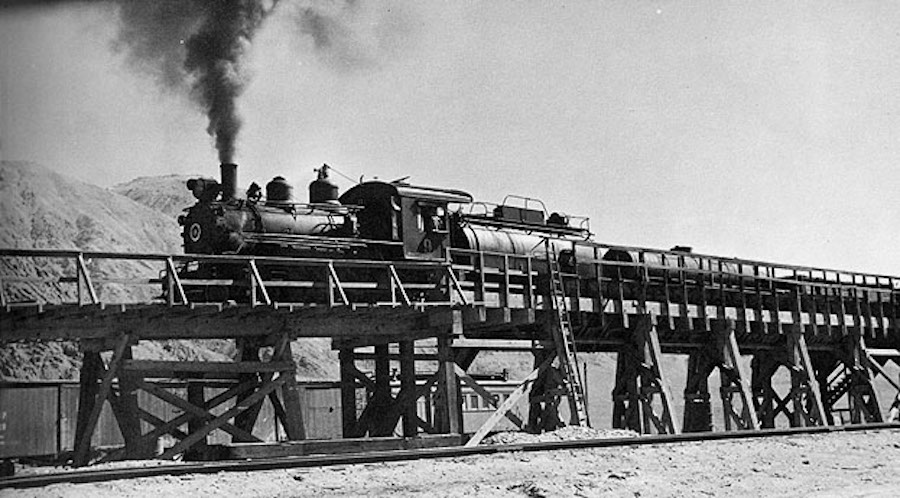
Number 9 hard at work

Created by a wild plumber!
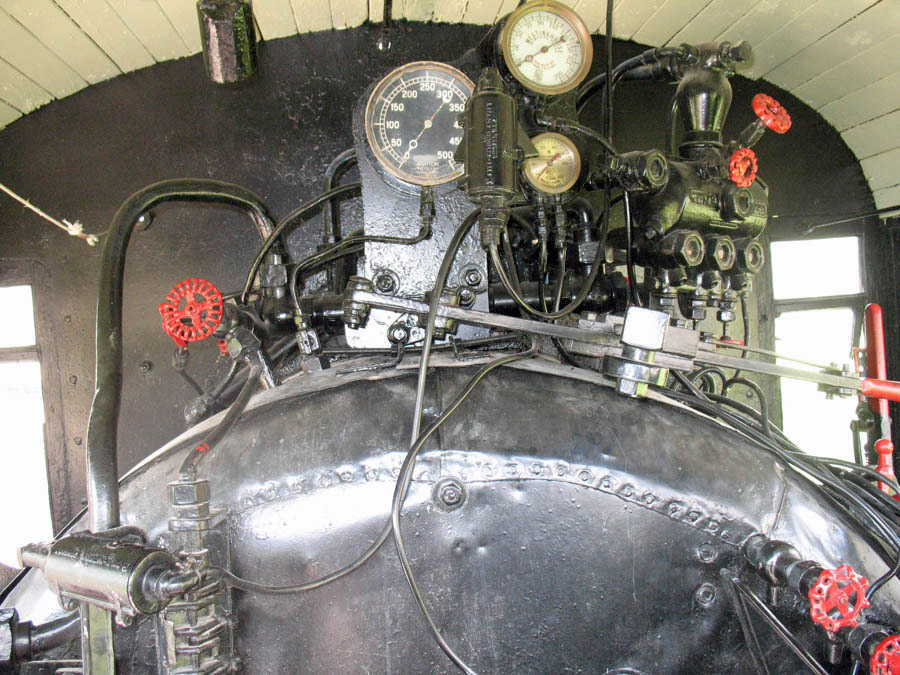
"Oh dear... Where do you put the key?"
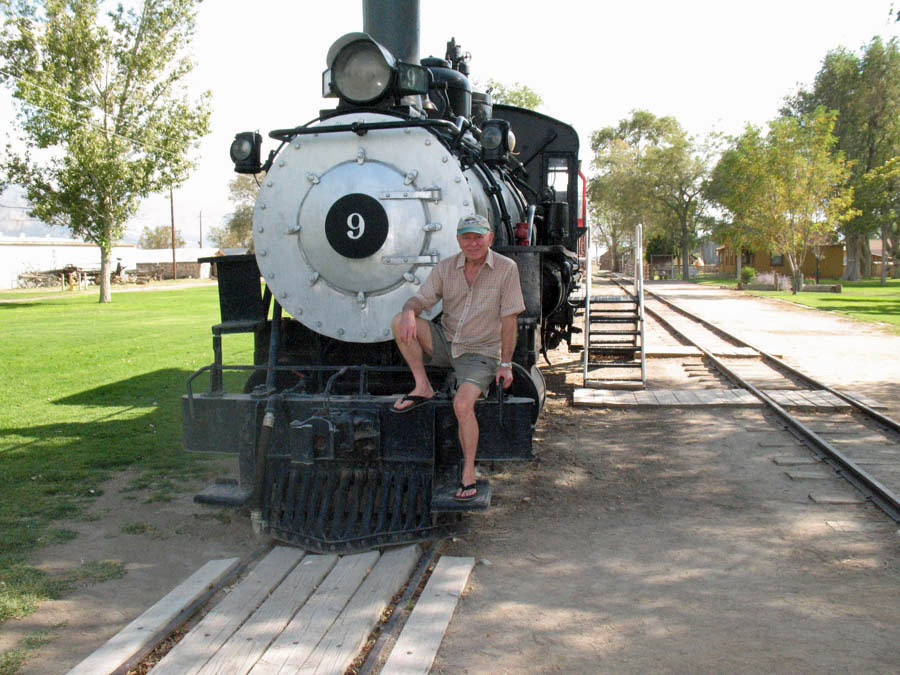
Engineer Bob...
About to catch a cow!
Did You Know? - A cow catcher is a device attached to the front of a train in order to clear obstacles off the track. Invented in 1838 by British engineer Charles Babbage, this device is now used mostly in North America, as modern European railway systems tend to be fenced off and less susceptible to the danger of foreign objects on the track. In the locomotive industry, a cow catcher is more commonly referred to as a pilot.
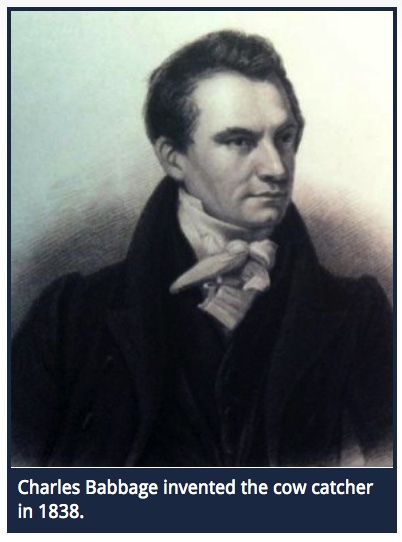
A cow catcher is typically a shallow, V-shaped wedge, designed to deflect objects from the track at a fairly high speed without disrupting the smooth movement of the train. The shape serves to lift any object on the track and push it to the side, out of the way of the locomotive behind it. The first cow catcher models were constructed of a series of metal bars on a frame, but sheet metal and cast steel models became more popular, as they work more smoothly.
Today, people in the railroad industry frown upon the term "cow catcher," but the pilot is still in use. Today's pilots are much smaller and shallower than their predecessors. Since diesel locomotives feature front cabs carrying crew, the pilot must be constructed to prevent the cab from being struck by objects deflected from the road. A separate feature known as an anticlimber is typically installed above the pilot to protect the cab.
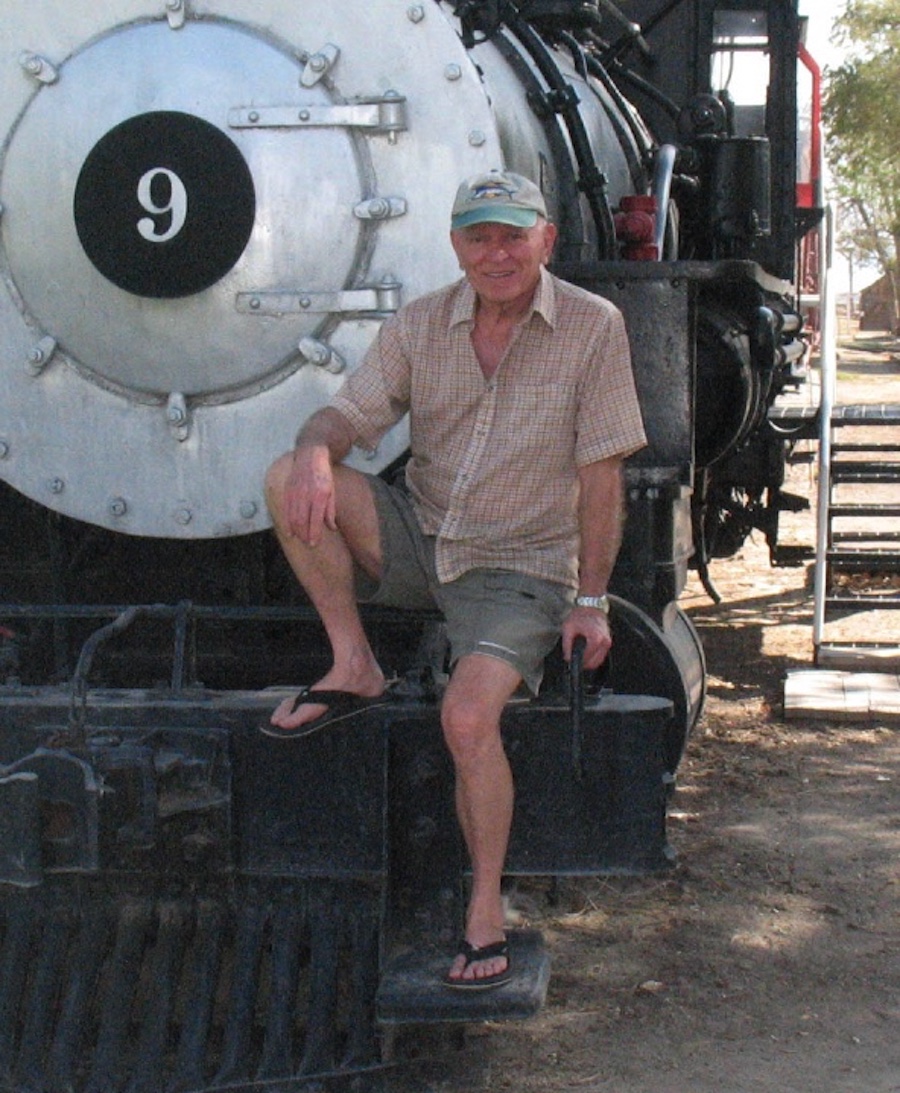
Where is the rope? I want to ring the bell!
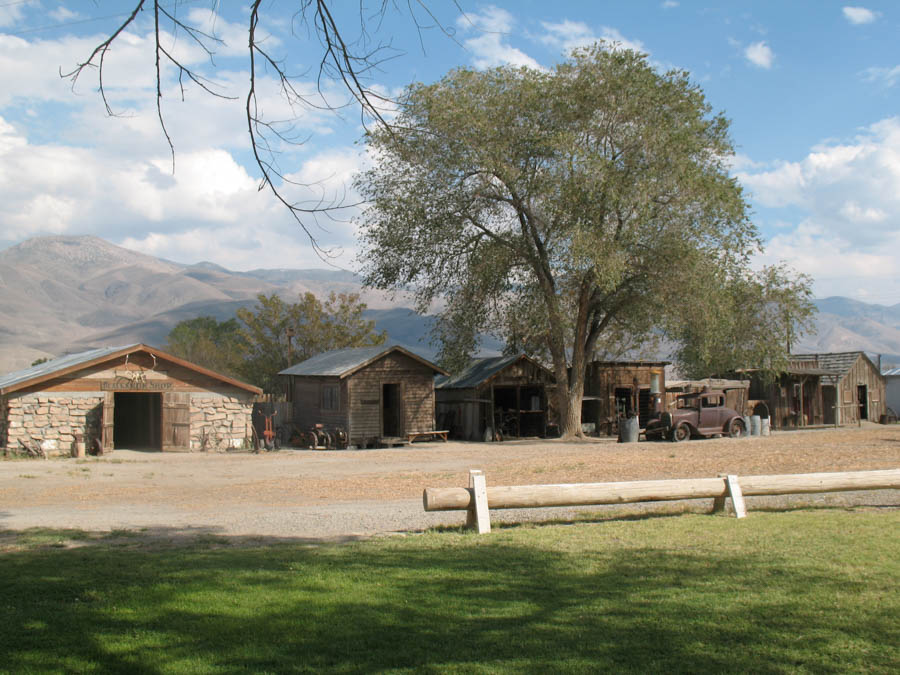
Many of these building are originals and were moved
onto the property to save them!
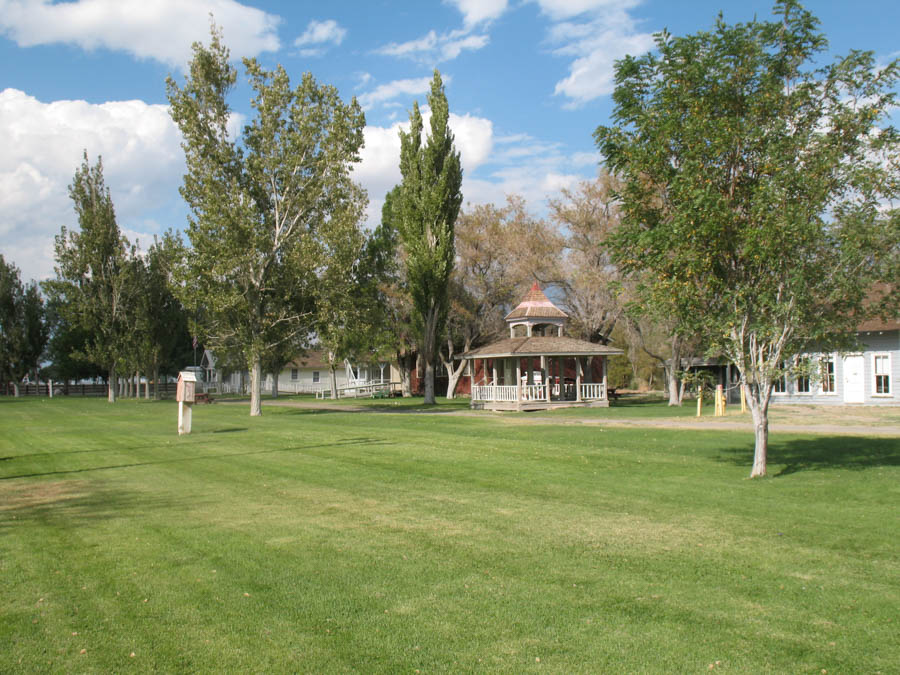
Every city must have a bandstand!
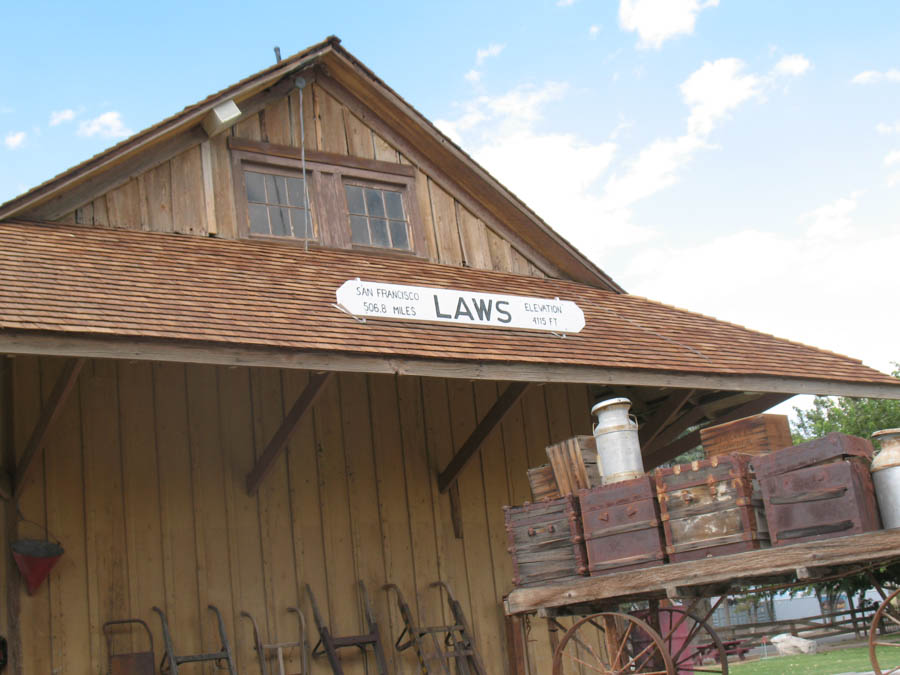
The baggage awaits the train... Apparently waiting a long time
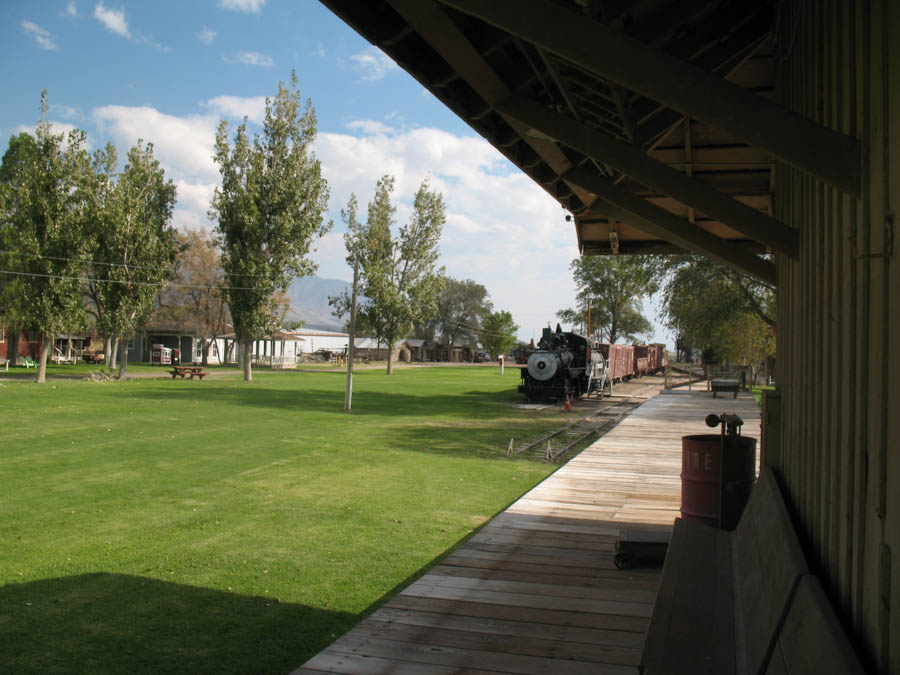
It is about to pull into the station... All it needs is tracks!
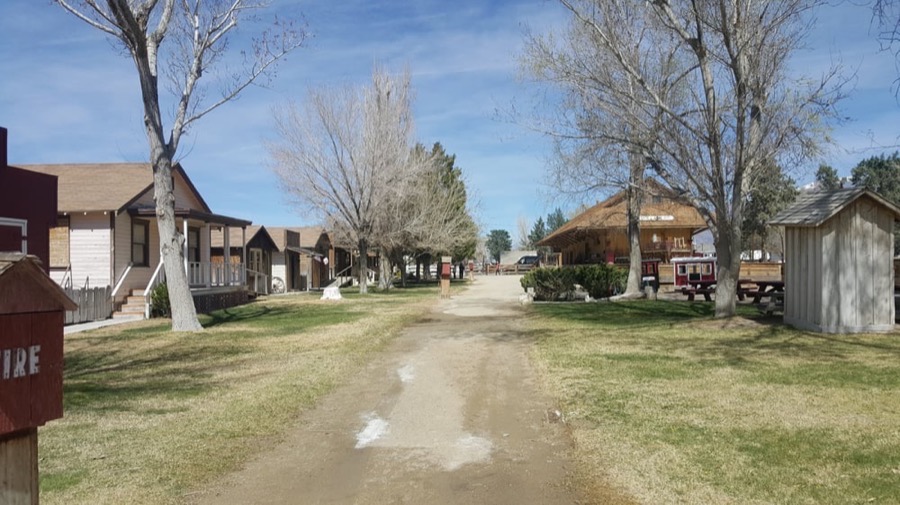
The town was right by the depot
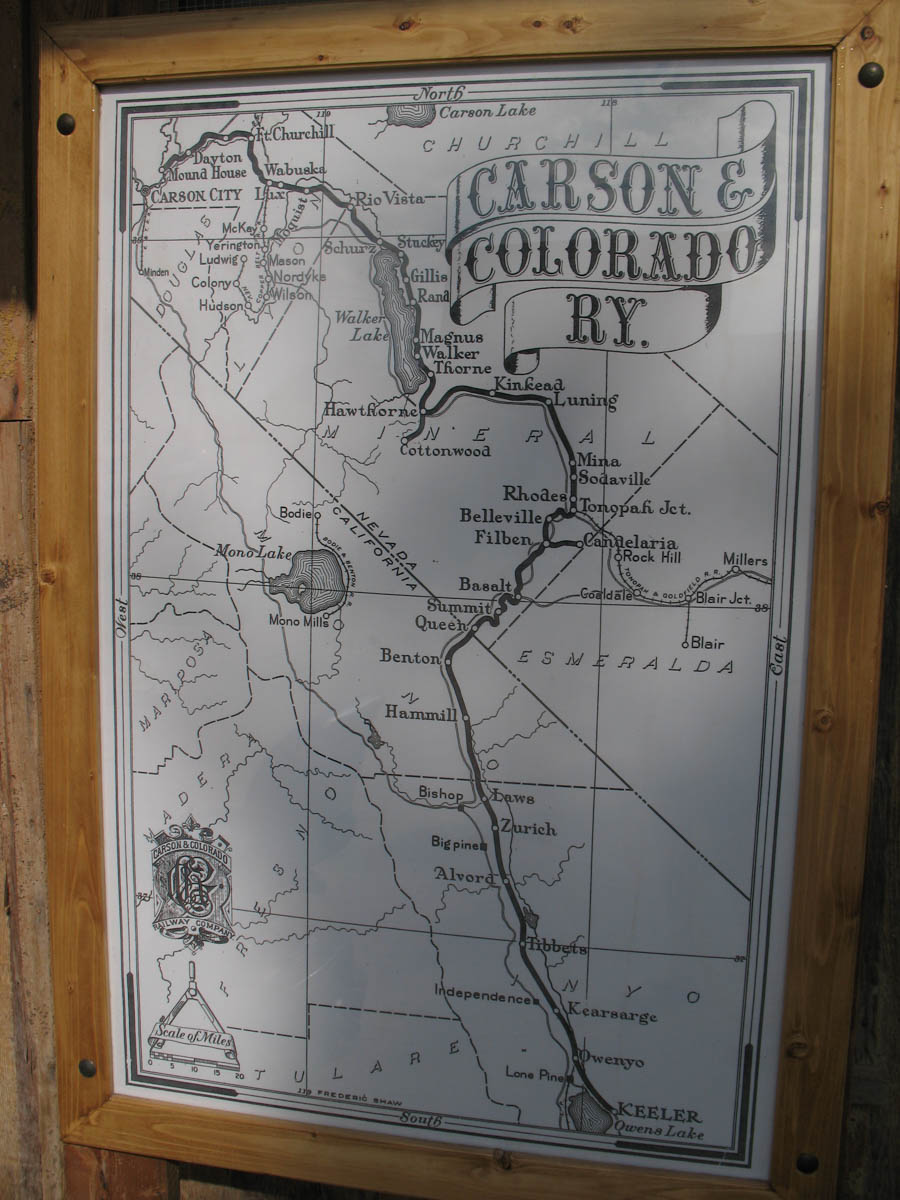
A mighty railroad it was!
Did You Know? - The Carson and Colorado Railway was a U.S. 3 ft (914 mm) narrow gauge railroad that ran from Mound House, Nevada, to Keeler, California below the Cerro Gordo Mines. It was incorporated on May 10, 1880 as the Carson and Colorado Railroad, and construction on the railroad began on May 31, 1880. 3 ft (914 mm) narrow gauge track was chosen to reduce cost. Much of the route parallels U.S. Route 95 Alternate, U.S. Route 95, Nevada State Route 360 or U.S. Route 6
The Carson & Colorado began operations with a single Baldwin 4-4-0, the Candelaria. The first train arrived at Keeler on August 1, 1883. The 300-mile route reached an altitude of 7100 feet in Montgomery Pass.
The railroad served an arid area heavily dependent on mineral resources for economic activity. The line was reorganized as the Carson and Colorado Railway in 1892 to reduce accumulated debt.
The Virginia and Truckee Railroad, the parent company of the C&C, sold the line to the Southern Pacific Company in 1900. Silver and gold discoveries at Tonopah, Nevada and Goldfield, Nevada provided a major boost of revenues shortly after the Southern Pacific purchase.
The northern 140 miles from Mound House to Mina, Nevada was converted to 4 ft 8 1⁄2 in (1,435 mm) standard gauge in 1905; and the C&C was merged into the Southern Pacific's 3 ft (914 mm) narrow gauge subsidiary, the Nevada and California Railroad.
The Nevada and California Railroad was reorganized into the Central Pacific Railroad in 1912.
In the early 20th century, it operated under the name "Southern Pacific Keeler Branch". Portions of the line were abandoned in the 1930s and the 1940s, and the last narrow gauge common carrier made its final run on April 29, 1960.
The rails were removed in January, 1961.
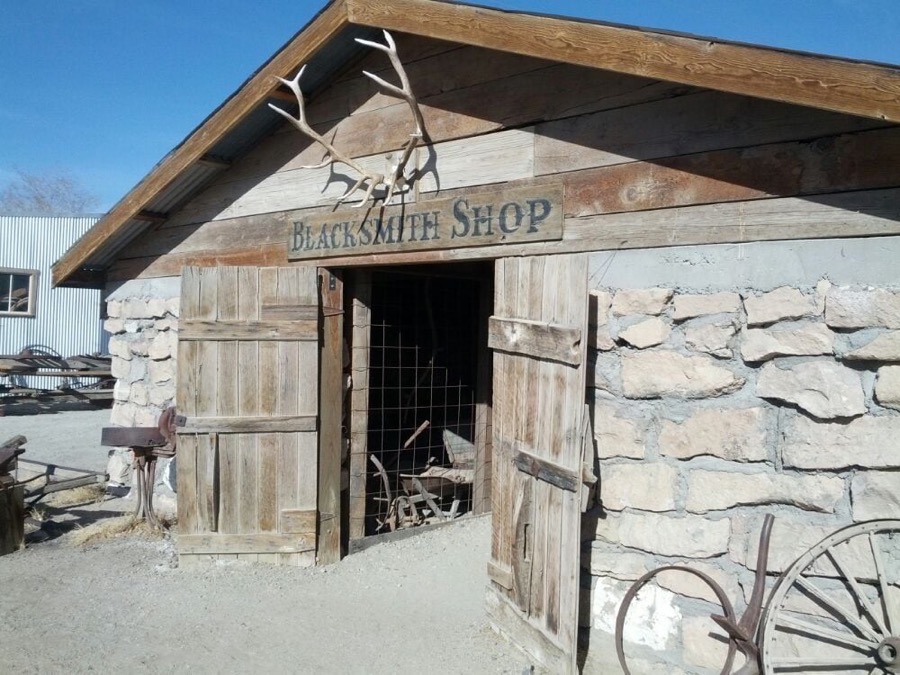
"Hey Bob... Let's ask the blacksmith if he repairs motorhomes"
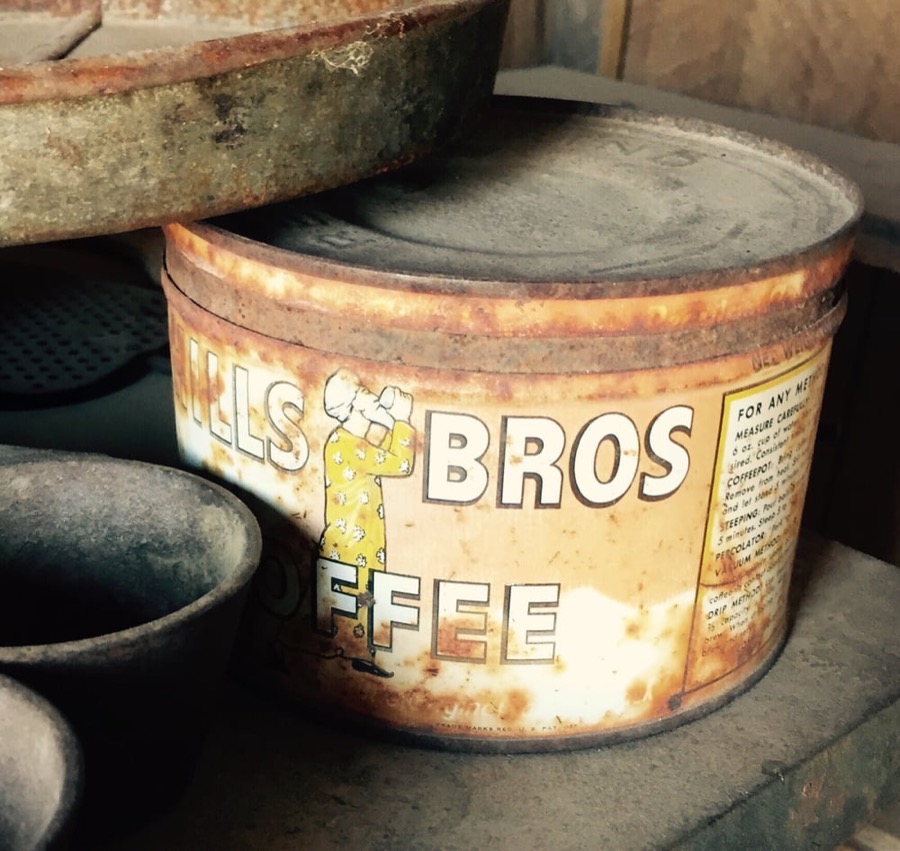
A real original...
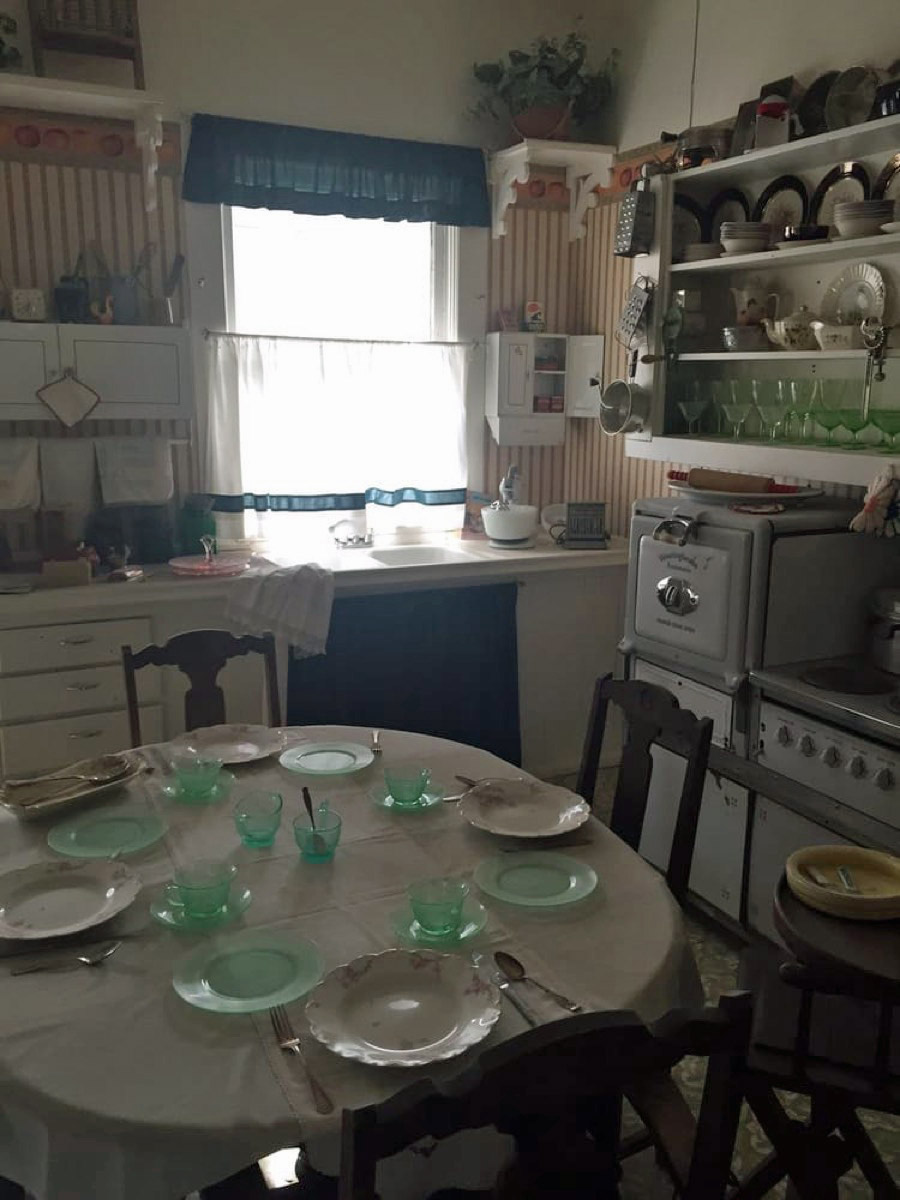
The dining at the museum was delightful.... They just were missing the food

The modern conveniences!

"Should we pick up some supplies for the remainder of the trip?
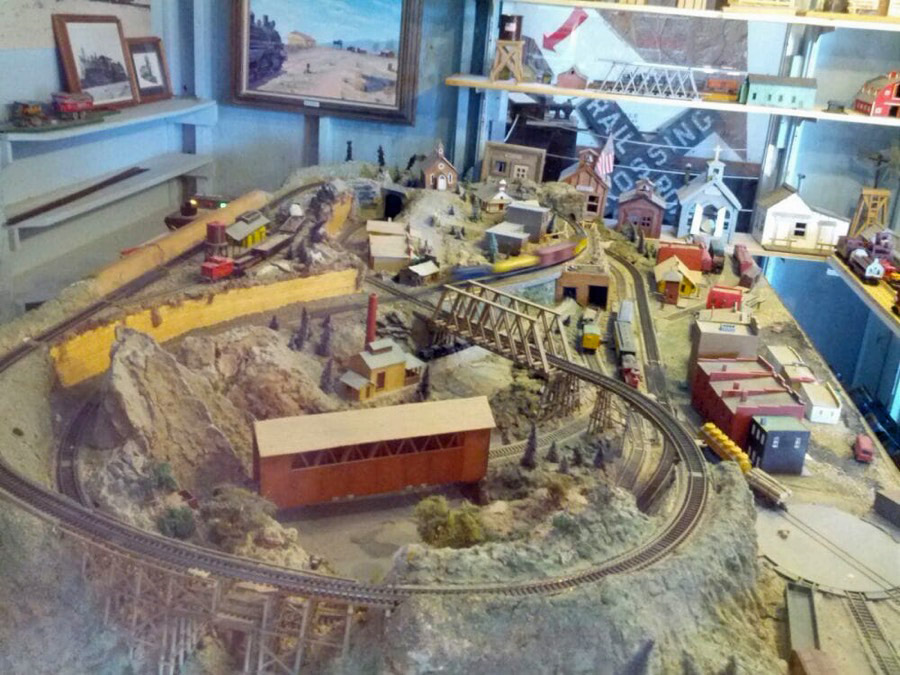
What would a train depot be without a model railroad?
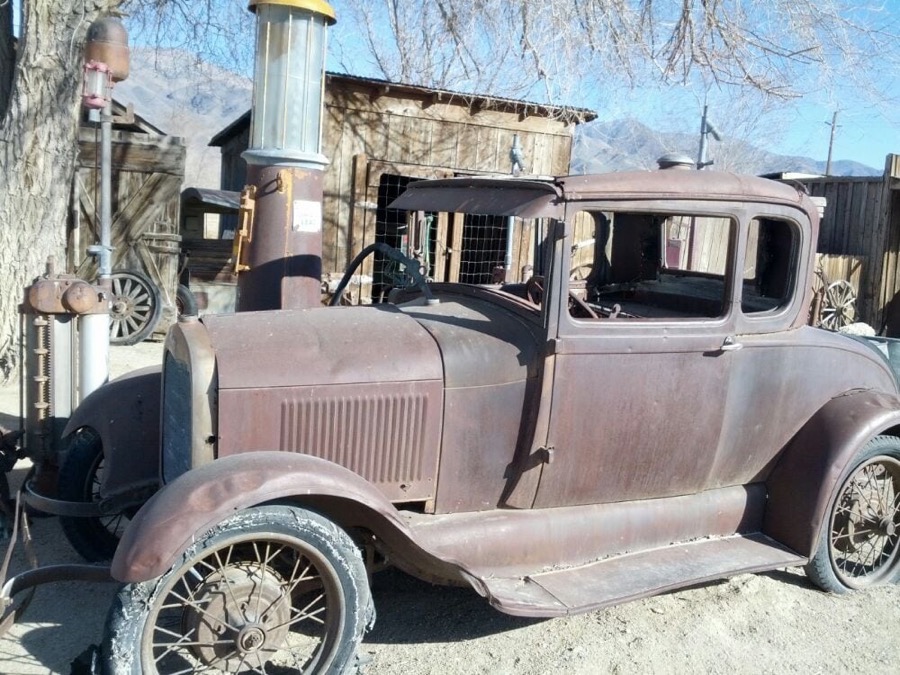
"Hey Sandy... It's time to drive back to the city"
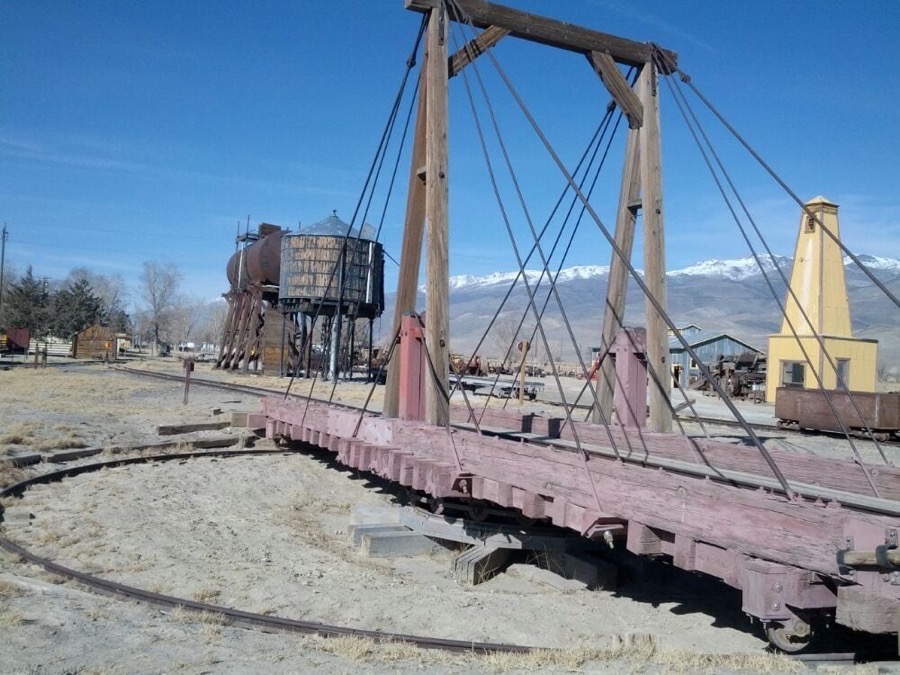
The turntable was powered by mules in those days!

Return to the Top or...

More local sights Lake Sabrina and a Casino